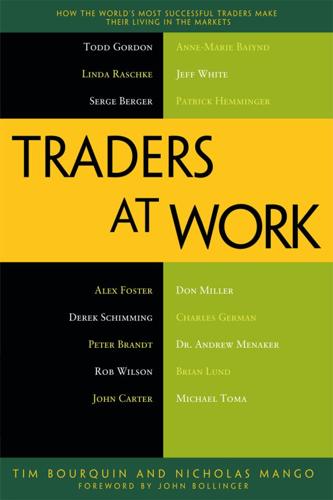
Traders at Work: How the World's Most Successful Traders Make Their Living in the Markets
by
Tim Bourquin
and
Nicholas Mango
Published 26 Dec 2012
FOREX.com and the other Forex companies within the currency markets would hedge their business with the big investment banks, and we were big clients of companies like UBS, Barclay’s, Goldman Sachs, and Lehman at the time, if you can believe it. Because of this relationship, we would get bank research, and there were a couple guys at each bank that I followed closely. There was a guy at UBS named Jim Short who did Elliott Wave. There was also a guy at Goldman who did Elliott Wave analysis, and I would watch and read their stuff every day. I e-mailed them and bothered them all the time with questions about Elliott Wave. I read all the books. It was the early days in my time at FOREX.com, and I spent a lot of time reading that bank research. These guys were making calls and doing analysis that nobody else had. Their analysis was spot on, and I found myself asking them all kinds of questions about how they were doing their analysis.
…
Remember, Elliott Wave is a picture of the psychology of the markets. Even if an economic report is terrible for the markets, if we’re in a bull market and the wave counts are strong, the market will head higher. Elliott Wave can tell you when we are in a bull market and when the market is willing to push aside poor data. So, yes, we look at fundamentals all day long. But we don’t trade the fundamentals. We’ll trade people’s expected reactions to the fundamentals—and that’s the key difference. Bourquin: That’s fascinating. So what that says to me is that you were so confident in the Elliott Wave that you’re willing to disregard even a huge economic report.
…
It’s a simple saying, but it always stuck with me. Elliott Wave is a methodology that allows you to quantify all the varied traditional technical patterns out there. There’s a lot of breakouts, breakdowns, flags, wedges, double tops, double bottoms, and so forth. Elliott will actually tell you at what point of the trend or correction you’d expect to see these corrections come in or these patterns come in. You overlay Fibonacci on top of it and it’ll give you expected starting points for trends and corrections, so that becomes your entries and exits. But on a more macro level, what is Elliott Wave? All it’s doing is helping you “tape read” and helping you understand what crowd psychology is driving the markets, and that’s all it really is.
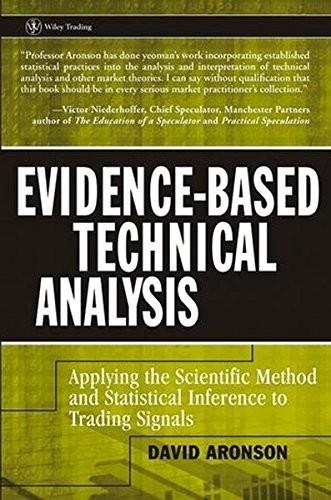
Evidence-Based Technical Analysis: Applying the Scientific Method and Statistical Inference to Trading Signals
by
David Aronson
Published 1 Nov 2006
TA methods fitting this profile include Elliott waves, Hurst cycle theory, astrology-based forecasting, and W.D. Gann analysis, among others. For example, the Elliott Wave Principle is based on an elaborate causal 70 METHODOLOGICAL, PSYCHOLOGICAL, PHILOSOPHICAL, STATISTICAL FOUNDATIONS explanation invoking universal forces that shape, not only the physical world, but mass psychology, culture, and society as well. Moreover, it has high retrofit power. By employing a large number of nested waves that can vary in both duration and magnitude, it is possible to derive an Elliott wave count (i.e., fit) for any prior segment of historical data.
…
The task of pattern research is exemplified by the early investigations of Charles H. Dow, originator of the Dow theory, or of Ralph N. Elliott, originator of the Elliott Wave Principle. In the process of formulating their ideas, they informally proposed and tested various hypotheses about which chart patterns had predictive power. The task of making real-time predictions by applying those patterns in current time would be exemplified by Dow theorist Richard Russell applying the Dow theory today or Robert Prechter, an Elliott-wave expert, making a forecast today. In the context of historical pattern research, I contend that hindsight 58 METHODOLOGICAL, PSYCHOLOGICAL, PHILOSOPHICAL, STATISTICAL FOUNDATIONS bias is unavoidable because it is impossible to shield oneself from outcome knowledge.
…
It was merely modified so that the directive was described as a “federal directive.”64 The story would not die because of its irony and the plausibility of long-winded bureaucrats. Elliott’s Tale The power of a good story may explain the enduring appeal of the Elliott Wave Principle (EWP), one of TA’s more grandiose conjectures. The Elliott Wave Principle holds that price waves express a universal order and form that is found not only in the fluctuations of financial markets but throughout the natural world, including the shapes of sea shells, galaxies, pine cones, sunflowers, and numerous other natural phenomena.
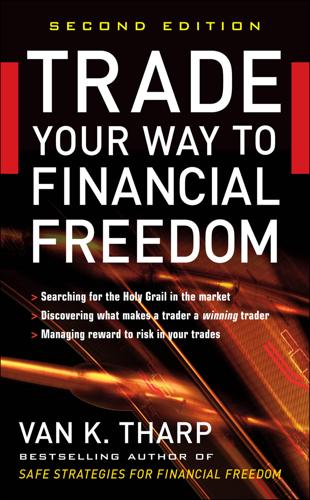
Trade Your Way to Financial Freedom
by
van K. Tharp
Published 1 Jan 1998
Each wave has a distinct characteristic, with the third major wave in the series of five being the most tradable. However, the theory gets much more complex because there are waves within waves. In other words, there are Elliott Waves of different magnitudes. For example, the first wave of the major movement would consist of another whole sequence of five waves followed by three corrective waves. Elliott, in fact, decided that there were nine categories of magnitude of waves, ranging from the Grand Supercycle to the subminuette waves. Certain rules aid the Elliott Wave theoretician in making decisions about the market. There are also variations to the rules in that waves may be stretched or compressed and there are some pattern variations.
…
When the market typically has met your trading concept in the past, it probably will do so again. The same goes for any other criteria you may be trading. If you follow seasonal patterns, then you must trade markets that show strong seasonal tendencies—agriculture products or energy products. If you follow Elliott Wave, then you must follow those markets for which Elliott Wave seems to work best. If you are a band trader, then you must find markets that produce nice, wide bands consistently. Whatever your trading concept, you must find the markets that best meet them. 7. Select a Portfolio of Independent5 Markets This topic is somewhat beyond the scope of this introductory book on developing a system.
…
Mor Securities commented, “Earnings have been so good recently that investors seem to easily shrug off potentially damaging news.”4 The need-to-understand bias becomes even more elaborate when it comes to trading system design. People manipulate daily bars in any number of strange ways and then develop strange theories to explain the market based upon those manipulations. The resulting theories then take on a life of their own, but they have little basis in reality. For example, what is the rational basis for the Elliott Wave theory? Why should the market move in three legs one way and two legs the other? Are you beginning to understand why the task of trading system development is so full of psychological biases? My experience is that most people will not be able to deal with the issues that come up in trading system design until they’ve solved some of their personal psychological issues dealing with fear or anger.
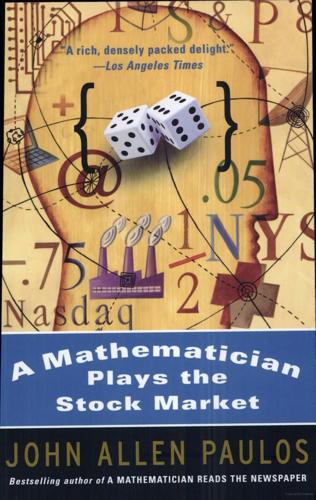
A Mathematician Plays the Stock Market
by
John Allen Paulos
Published 1 Jan 2003
To the extent there is one, it most likely derives from psychology, perhaps in part from the Keynesian idea of conventionally anticipating the conventional response, or perhaps from some as yet unarticulated systemic interactions. “Unarticulated” is the key word here: The quasi-mathematical jargon of technical analysis seldom hangs together as a coherent theory. I’ll begin my discussion of it with one of its less plausible manifestations, the so-called Elliott wave theory. Ralph Nelson Elliott famously believed that the market moved in waves that enabled investors to predict the behavior of stocks. Outlining his theory in 1939, Elliott wrote that stock prices move in cycles based upon the Fibonacci numbers (1, 2, 3, 5, 8, 13, 21, 34, 55, 89, . . . , each successive number in the sequence being the sum of the two previous ones).
…
(Biorhythm theory is the idea that various aspects of one’s life follow rigid periodic cycles that begin at birth and are often connected to the numbers 23 and 28, the periods of some alleged male and female principles, respectively.) It also brings to mind the ancient Ptolemaic system of describing the planets’ movements, in which more and more corrections and ad hoc exceptions had to be created to make the system jibe with observation. Like most other such schemes, Elliott wave theory founders on the simple question: Why should anyone expect it to work? For some, of course, what the theory has going for it is the mathematical mysticism associated with the Fibonacci numbers, any two adjacent ones of which are alleged to stand in an aesthetically appealing relation.
…
. , and the bigger the numbers involved, the closer the two ratios become. Consider again, the Fibonacci numbers, 1, 2, 3, 5, 8, 13, 21, 34, 55, . . . . The ratios, 5/3, 8/5, 13/8, 21/13, . . . , of successive Fibonacci numbers approach the golden ratio of 1.618 . . . ! There’s no telling how an Elliott wave theorist dabbling in currencies at the time of the above exchange rate coincidence would have reacted to this beautiful harmony between money and mathematics. An unscrupulous, but numerate hoaxer might have even cooked up some flapdoodle sufficiently plausible to make money from such a “cosmic” connection.
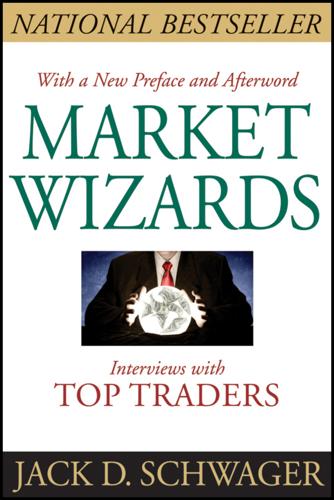
Market Wizards: Interviews With Top Traders
by
Jack D. Schwager
Published 7 Feb 2012
Marty Zweig and Ned Davis are great; Bob Prechter is the champion. Prechter is the best because he is the ultimate market opportunist. What do you mean by opportunist? The reason he has been so successful is that the Elliott Wave theory allows one to create incredibly favorable risk/reward opportunities. That is the same reason I attribute a lot of my own success to the Elliott Wave approach. Any advisor you consider underrated? I think Ned Davis does the best research on the stock market that I have seen. Although he is well known, I don’t think he has received the recognition he deserves. Any analysts you consider overrated?
…
I would also recommend Marty Zweig’s book, Winning on Wall Street (Warner Books, Inc., New York, NY, 1986) and Stan Weinstein’s Secrets for Profiting in Bull and Bear Markets (Dow, Jones-Irwin, New York, NY, 1988), which has some good sections on short selling. Finally, on Elliott Wave analysis, which I think has some validity, there is Elliott Wave Principle by Frost and Prechter (New Classic Library, Inc., Gainesville, GA, 1978) and a book called Super Timing by an English fellow named Beckman (Milestone Publishers, London). All those books are good, but you learn the most from the market itself. Every time I buy a stock, I write down the reasons why I bought it [he pulls out a binder containing annotated charts].
…
If you don’t believe it, try it. These guys have it all: a method, the conviction and the discipline to act decisively time after time, regardless of distractions and pressures. They are heroes of Wall Street, and Jack Schwager’s book brings their characters vividly to life.” —Robert R. Prechter, Jr., Editor, The Elliott Wave Theorist Other Books by Jack D. Schwager A Complete Guide to the Futures Markets: Fundamental Analysis, Technical Analysis, Trading, Spreads, and Options Getting Started in Technical Analysis The New Market Wizards: Conversations with America’s Top Traders Stock Market Wizards: Interviews with America’s Top Stock Traders Schwager on Futures: Fundamental Analysis Schwager on Futures: Managed Trading Myths & Truths Schwager on Futures: Technical Analysis Study Guide to Accompany Fundamental Analysis (with Steven C.

Walk Away
by
Douglas E. French
Published 1 Mar 2011
Robert Prechter, owner of the Elliott Wave International writes in his book Conquer the Crash that the lending process for businesses “adds value to the economy,” while consumer loans are counterproductive, adding costs but no value. The banking system, with its focus on consumer loans, has shifted capital from the productive part of the economy, “people who have demonstrated a superior ability to invest or produce (creditors) to those who have demonstrated primarily a superior ability to consume (debtors).” Prechter made the point in the November 2009 edition of the Elliott Wave Theorist that banks have lent sparingly to businesses for the past 35 years.
…
., 36 C Caldwell, Phyllis, 50 Carmon, Ziv, 72 Casey, Doug, 60 CBS, 1 Cisneros, Henry, 33 CNBC, 3, 16 congressional loan conduit, 31 chart Conquer the Crash, 60 Courson, John, 10 Cutaia, Susan and Anthony, 39, 41 D De Coster, Karen, 5 Discriminating Risk, 31, 54 Duebel, Achim, 22 E Edelman, Ric, 42 Einhorn, David, 56 Elliott Wave Theorist, 60 Empowerment Network, The, 32 Ethics of liberty, The, 46, 54 Ethics of Money Production, The, 61 Exotic Preferences, 70 Expanding the Opportunities, 32 Equity Office Properties, 8 F Fannie Mae Bank of America, 16–17 CEO James Johnson, 37 conventional mortgages, 31 expanded government role, 52 FDR created, 28 HUD, 30 industry centralization, 34 locking out borrowers, 59 loosened loan criteria, 33 losses, 13 no incentive to negotiate, 49 Rothbard view, 48 underwater houses, 76–77 Fair Housing Act, 30 FDIC, 35, 39, 48 Federal Home Loan Banking System, 22 Federal Housing Administration, 22, 23, 29 Federal Reserve, 4, 5, 35, 36, 39, 42 Financial Times, 53 FIREA, 32 First American Core Logic, 3 Fishman, Robert, 28, 29 For a New Liberty, 54 Freddie Mac bond losses, 17 congressional authorization, 31 entrepreneurial risk, 56 expanded government role, 52 industry centralization, 34 loosened loan criteria, 33 Mortgage Electronic Registration System, 13 mortgages back to tenders, 16 Rothbard view, 48 G Geithner, Tim, 53, 57 Genesove, David, 69 Ginnie Mae, 30–31 Goodman, Laurie, 49 Goodman, Peter S., 36, 37, 39 Government National Mortgage Asssociation, 3, 52 Grant’s Interest Rate Observer, 46 Great Depression, 4, 26, 52 Greenspan, Alan, 35 Gross, Bill, 52 Guiso, Luigi, 45 H Hagerty, James R., 49 Hayden, Dolores, 22, 28 history of home values, 2 chart Home Depot, 5 Home Modernization Bureau, 20 Hoover, Herbert, 4, 20, 21, 36 HOPE, 32 Housing Advisory Council, 26 Hudson, Kris, 9 Hülsmann, Jörg Guido, 61, 62 Hutchinson, Janet, 20, 27–28 I Indiviglio, Daniel, 50 J Johnson, James, 37 Johnston, Joseph F., 8 journal, Association for Financial Counseling, 41 journal of Financial Planning, 41, 42 journal of Markets & Morality, 8 K Kemp, Jack, 32–33 Kudlow, Larry, 16 Kwak, James, 52 L La Valle, Nye, 14 Langone, Ken, 5 Las Vegas, 3, 49, 50, 57, 71, 79 Las Vegas Review journal, 50 Legal Studies Discussion Paper, 1 Levitin, Adam, 12 Levitt, William, 20 Lewis, Sinclair, 26 LewRockwell.com, 5 Lira, Gonzalo, 12–14 Lowenstein, George, 70 Lowenstein, Roger, 11, 62 Luth, Don, 62 M Macerich Co., 9 Market For Liberty, The, 56 Marketing and Financing Home Ownership, 19 Mauldin, John, 14 Mayer, Christopher, 69 McCarthy, Jonathan, 36 Miami Beach, 3 Mind of the Market, The, 71 Mises, Ludwig von, 6, 75 Moffett, James, 26 Morgan Stanley, 8, 9 Morgenson, Gretchen, 16 MSNBC, 16 Murin, Joseph, 3, 5 Murphy, Larry, 50 N Naked Capitalism, 14 National Association of Real Estate Boards, 20 National Association of Realtors, 31 National Homeownership Strategy, 33–34 Natural law and the fiduciary duties, 8 New Deal, 23 New York Times, iv, 16, 51 O Obama, Barack Hussein, 14 OFHEO, 32 Otis, James, iii Own Your Own Home, 4, 19, 20 P Past Due, 36 Paulson Jr., Henry M., 10 Peach, Richard W., 36 Phoenix, 3, 51 PIMCO, 52, 53 Pines, Michael, 16 Pinto, Edward, 33 Powell, Michael, 51 Power and Market, 57 Prechter, Robert, 60 Predictably Irrational, 72 Prelec, Dražen, 70 private property, iii, 24–25, 27–28, 47 Pruitt, A.

New Market Wizards: Conversations With America's Top Traders
by
Jack D. Schwager
Published 28 Jan 1994
Another important element is that they have a perceptual filter that they know well and that they use. By perceptual filter I mean a methodology, an approach, or a system to understanding market behavior. For example, Elliott Wave analysis and classical chart analysis are types of perceptual filters. In our research, we found that the type of perceptual filter doesn’t really make much of a difference. It could be classical Charles Faulkner / 429 chart analysis, Gann, Elliott Waves, or Market Profile—all these methods appear to work, provided the person knows the perceptual filter thoroughly and follows it. I have an explanation as to why that may be the case.
…
Normally, when I surrender a meaningful percentage of my profits, I put on the brakes, either trading only minimally or ceasing to trade altogether. Instinctively, I seemed to be following the same script on this occasion, as my positions were reduced to minimal levels. At this time, I received a call from my friend Harvey (not his real name). Harvey is a practitioner of Elliott Wave analysis (a complex the- 6 / The New Market Wizard ory that attempts to explain all market behavior as part of a grand structure of price waves).* Harvey often calls me for my market opinion and in the process can’t resist telling me his. Although I have usually found it to be a mistake to listen to anyone else’s opinions on specific trades, in my experience Harvey had made some very good calls.
…
But I must tell you that from past experience I’ve found listening to other opinions disastrous. If I get in on your opinion, I’ll have no basis for deciding when to get out of the trade. So understand that my plan is to follow you all the way. I’ll get out when you get out, and you need to let me know when you change your opinion.” Har- * The Elliott Wave Principle, as it is formally called, was originally developed by R. N. Elliott, an accountant turned market student. Elliott’s definitive work on the subject was published in 1946, only two years before his death, under the rather immodest title: Nature’s Law—The Secret of the Universe. The application of the theory is unavoidably subjective, with numerous interpretations appearing in scores of volumes.
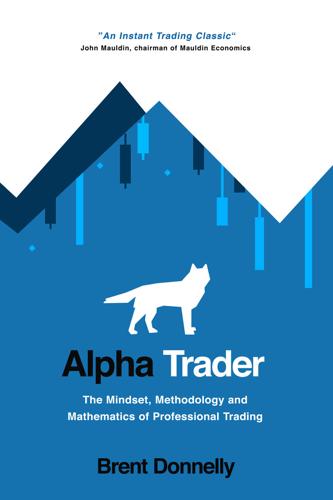
Alpha Trader
by
Brent Donnelly
Published 11 May 2021
Depending on the story, you will often see the narrative cross over from financial media to the mainstream media at this point if the narrative is interesting and important enough. Non-experts will join the party (retail and macro tourists) and this will push price aggressively higher. Stage 5 is usually the most surprising and volatile part of the narrative cycle as sellers step away and buyers get desperate. In Elliott Wave, this is also Wave 5 and Elliott Wave Theory warns that Wave 5 can often be the most impulsive part of a move. This stage is often characterized by choppy, jumpy, volatile moves, euphoria and overshooting. Trend following systems add all the way up. Stage 6: The Peak and the Turn. The top in the narrative and price can be a long drawn-out process or an impulsive overshoot and collapse.
…
Instantaneous communication speeds, near-unlimited availability of information and rigorous compliance and monitoring of non-public information have dramatically flattened the landscape for both macro and bank traders. Technical Analysis 1980 to 2006 The most common trading strategy on most trading desks I worked on before 2006 was technical analysis. Most techniques were fairly basic, while some of the smarter-sounding people might throw in some Elliott Wave or more esoteric systems built in Lotus 1-2-3. Most of these strategies produced what amounted to trend following or breakout signals. Continuation patterns, breakouts, head and shoulders etc. were the favored setups and these piggybacked on the underlying high Sharpe of trend following strategies in that era.
…
Figure 9.1 shows the general narrative cycle: The numbers in figure 9.1 refer to the following section in which I will briefly describe each phase of the narrative cycle. You might recognize this as similar to other cycle analysis like the panic/euphoria model or the famous SELL? SELL? SELL? BUY! BUY! comic by Kal. It also rhymes a fair bit with Elliott Wave analysis113. UNDERSTAND THE NARRATIVE CYCLE It is important to note when reading this that the narrative cycle operates on many time fractals. There are the big macroeconomic narratives but there are also sometimes much shorter narrative cycles that can last as little as 24 hours. Often news or economic data will appear to be important but then run out of steam very swiftly as the market pivots back to the main story.
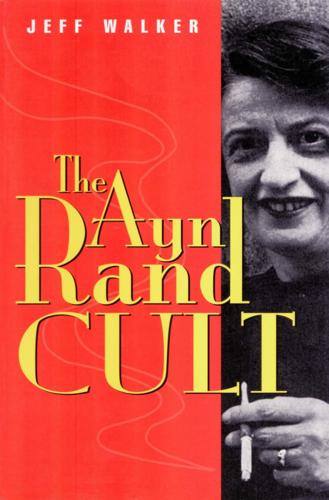
Ayn Rand Cult
by
Jeff Walker
Published 30 Dec 1998
Bidinotto points out that the way Objectivists habitually look at the world lead them to conclude that civilization is near collapse. Objectivist Bob Prechter, who was promoting The Ayn Rand Institute in his investment newsletter just as the stock market began to tank in 1987, and whose track record in his Elliott Wave Theorist obliged the Financial News Network to honor him as the stock market forecasting guru of the 1980s, predicted the mother of all depressions on the scale of Atlas Shrugged between the late 1980s and the mid-1990s. In 1995 he published the 475-page At the Crest of the Tidal Wave: A Forecast for the Great Bear Market.
…
Following October’s market meltdown, he changed from super-bull to super-bear, cancelled his prediction for an additional 2,700 to 3,800 rise and instead forecast a cataclysmic 2,700 to 400 drop, warning investors who had yet to exit the market to do so. Perversely, the Dow then proceeded to climb 5,500 points higher than the ceiling he had once called for prior to his bull-to-bear transformation. As his British ‘Elliott Wave’ counterpart Robert C. Beckmann put it in 1992, “I’ve never been too happy about the Prechter version” of the theory. Many took Prechter for the Elliot Wave messiah, but he has since been relegated to comparative obscurity. Prechter was taking after Rand, who had forecast in February 1951, the outset of a 20-year golden age of prosperity, that “we are on the brink of economic ruin brought about by policies such as the Marshall Plan.”
…
Smith and Smith 1991. Page 331: “is three-quarters based . . .” Taylor 1991; “There would be . . .” Hospers 1991; “the Democrats were . . .” Taylor 1991; “mainly ‘libertarian’ in . . .” Cockett 1995, p. 189. Page 332: “If government intervention . . .” etc. Donway 1992; Objectivist Bob Prechter . . . Elliott Wave Theorist (5 October 1987). Page 333: “I’ve never been . . .” Beckman 1995, pp. 186–87; “we are on . . .” Rand 1995, p. 490; “In the worst . . .” Bidinotto 1985; “disconnected ideological fragments . . .” Robert Hunt 1984; “considers Atlas Shrugged . . .” Niederhoffer 1997b. Page 334: “the Hayekian revolution . . .”

Kings of Crypto: One Startup's Quest to Take Cryptocurrency Out of Silicon Valley and Onto Wall Street
by
Jeff John Roberts
Published 15 Dec 2020
• • • On New Year’s Day 2017, investors had cheered bitcoin’s long-awaited return to $1,000. Eleven months later, the currency smashed through the $10,000 mark. Some of Wall Street’s finest thinkers offered elegant technical explanations for the incredible gain. Quants at Goldman Sachs employed something called the Elliott Wave Theory to suggest that the run-up represented an “impulse wave pattern” typical of mass market psychology. A financial technician named J. C. Parets said the upswing mirrored the Fibonacci sequence, a famous mathematical pattern that occurs in seashells, pine cones, and other elements of the natural world.
…
See Zhao, Changpeng DAO (Decentralized Autonomous Organization), 90–93, 145–146, 169–170 dApps, 188 Davenport, Ben, 57 decentralized finance (DeFi), 217–218 Dentacoin, 138 Dewitt, Dorothy, 224 Digital Asset, 104, 105 Digital Gold (Popper), 23 Dimon, Jamie, 103, 138, 211–213 diversity, 225 Dixon, Chris, 69, 93, 124, 157, 216 Dogecoin, 54, 181–182 Dorman, Jeff, 105–106 Draper, Tim, 167 Dread Pirate Roberts, 31, 59, 122 Earn.com, 186–187 Ehrsam, Fred, 10–14 on Ethereum and smart contracts, 93–95 on the future, 220, 225–226 the hedger and, 174 Olaf hired by, 28–29 Electronic Frontier Foundation, 100 electronic market makers, 192 Elliott Wave Theory, 151 enterprise blockchain, 73 ether, 92–93 Ethereum, 84, 87–97 Binance and, 182 blockchain issues in, 202 flash crash of, 139–141 hard fork at, 91–93 market caps of, 203 popularity of, 134–139 value of, 152 Ethereum Classic, 196 Facebook, 63, 64 Project Libra, 205–207 Winklevoss twins and, 114–115 Farmer, David, 159, 175 Federal Bureau of Investigation, 59–60, 126–127 Federal Reserve, 12, 53, 212 Federal Reserve Bank of New York, 102 Fidelity, 209–210 Financial Crimes Enforcement Network, 126 Financial Times, 136–137 Finney, Hal, 23 flash crashes, 139–141 Forbes magazine, 148 Force, Carl Mark, IV, 59–60 Fortune magazine, 206 Founder’s Fund, 166–167 Freeman, Kristian, 153 Galaxy Digital, 172 Garlinghouse, Brad, 224 GDAX (Global Digital Asset Exchange), 96–97, 101–103 flash crash in, 139–141 professional traders and, 113–117 Gemini, 97, 105, 116–117 Gemini Dollar, 205 geo-fencing, 40 Gilmore, John, 100 Give Crypto, 175 Goldman Sachs, 11–12, 37, 104, 171, 212 on bitcoin, 225 Elliott Wave Theory at, 151 Google, 40, 64, 157, 195–196 Google Ventures, 204 Graham, Paul, 36 Grayscale, 54 Grayscale Bitcoin Trust, 208 Hacker News, 78 Hacking Team, 197 Hammell, Craig, 38, 64 on adding currencies, 181–182 on Hirji, 191 on infrastructure, 155–156 Hanyecz, Laszlo, 22 hard forks, 92, 147 Haun, Katie, 17–18, 20, 155, 225 as Coinbase ally, 49 cryptocurrency expertise of, 59–60 on prosecuting bitcoin, 24, 31 at Stanford, 107, 218 Hearn, Mike, 76 hedge funds, 96, 172 Heroku, 156 hijackers, 142–143 Hilton, Paris, 144–145 Hirji, Asiff, 157–158, 173–175, 209 on Binance, 183 departure of, 198–199 on Earn.com, 187 on the future of crypto, 216–217 Srinivasan and, 193–200 style and personality of, 190–193 Hirschman, Albert, 48, 185 “hockey stick growth,” 51–52 hodlers, 83–84 HoweyCoin, 168–169 IBM, 90, 216 ICOs (initial coin offerings), 135–138 Binance and, 179 HoweyCoin and, 168–170 SEC on, 145–146, 168–170 swindles around, 141–145 impulse wave pattern, 151 infrastructure, 75–84, 155–159, 209–210 insider trading, 160 Internal Revenue Service, 121–126, 173 Jobs, Steve, 7, 99, 109, 111 JPM Coin, 212 JPMorgan Chase, 103, 104, 138, 211 Karpelès, Mark, 55–58 Knight, Phil, 39 KodakCoin, 167 Kraken, 96–97, 114 Lamborghinis, 146–147, 167 Langschaedel, Julian, 39 Lawsky, Benjamin, 127 Lee, Bobby, 82 Lee, Charlie, 39–40, 54, 80–81, 88 in Beijing, 81–83 departure of from Coinbase, 117–118 on infrastructure, 156 Litecoin and, 223 on Mt.
…
See Zhao, Changpeng DAO (Decentralized Autonomous Organization), 90–93, 145–146, 169–170 dApps, 188 Davenport, Ben, 57 decentralized finance (DeFi), 217–218 Dentacoin, 138 Dewitt, Dorothy, 224 Digital Asset, 104, 105 Digital Gold (Popper), 23 Dimon, Jamie, 103, 138, 211–213 diversity, 225 Dixon, Chris, 69, 93, 124, 157, 216 Dogecoin, 54, 181–182 Dorman, Jeff, 105–106 Draper, Tim, 167 Dread Pirate Roberts, 31, 59, 122 Earn.com, 186–187 Ehrsam, Fred, 10–14 on Ethereum and smart contracts, 93–95 on the future, 220, 225–226 the hedger and, 174 Olaf hired by, 28–29 Electronic Frontier Foundation, 100 electronic market makers, 192 Elliott Wave Theory, 151 enterprise blockchain, 73 ether, 92–93 Ethereum, 84, 87–97 Binance and, 182 blockchain issues in, 202 flash crash of, 139–141 hard fork at, 91–93 market caps of, 203 popularity of, 134–139 value of, 152 Ethereum Classic, 196 Facebook, 63, 64 Project Libra, 205–207 Winklevoss twins and, 114–115 Farmer, David, 159, 175 Federal Bureau of Investigation, 59–60, 126–127 Federal Reserve, 12, 53, 212 Federal Reserve Bank of New York, 102 Fidelity, 209–210 Financial Crimes Enforcement Network, 126 Financial Times, 136–137 Finney, Hal, 23 flash crashes, 139–141 Forbes magazine, 148 Force, Carl Mark, IV, 59–60 Fortune magazine, 206 Founder’s Fund, 166–167 Freeman, Kristian, 153 Galaxy Digital, 172 Garlinghouse, Brad, 224 GDAX (Global Digital Asset Exchange), 96–97, 101–103 flash crash in, 139–141 professional traders and, 113–117 Gemini, 97, 105, 116–117 Gemini Dollar, 205 geo-fencing, 40 Gilmore, John, 100 Give Crypto, 175 Goldman Sachs, 11–12, 37, 104, 171, 212 on bitcoin, 225 Elliott Wave Theory at, 151 Google, 40, 64, 157, 195–196 Google Ventures, 204 Graham, Paul, 36 Grayscale, 54 Grayscale Bitcoin Trust, 208 Hacker News, 78 Hacking Team, 197 Hammell, Craig, 38, 64 on adding currencies, 181–182 on Hirji, 191 on infrastructure, 155–156 Hanyecz, Laszlo, 22 hard forks, 92, 147 Haun, Katie, 17–18, 20, 155, 225 as Coinbase ally, 49 cryptocurrency expertise of, 59–60 on prosecuting bitcoin, 24, 31 at Stanford, 107, 218 Hearn, Mike, 76 hedge funds, 96, 172 Heroku, 156 hijackers, 142–143 Hilton, Paris, 144–145 Hirji, Asiff, 157–158, 173–175, 209 on Binance, 183 departure of, 198–199 on Earn.com, 187 on the future of crypto, 216–217 Srinivasan and, 193–200 style and personality of, 190–193 Hirschman, Albert, 48, 185 “hockey stick growth,” 51–52 hodlers, 83–84 HoweyCoin, 168–169 IBM, 90, 216 ICOs (initial coin offerings), 135–138 Binance and, 179 HoweyCoin and, 168–170 SEC on, 145–146, 168–170 swindles around, 141–145 impulse wave pattern, 151 infrastructure, 75–84, 155–159, 209–210 insider trading, 160 Internal Revenue Service, 121–126, 173 Jobs, Steve, 7, 99, 109, 111 JPM Coin, 212 JPMorgan Chase, 103, 104, 138, 211 Karpelès, Mark, 55–58 Knight, Phil, 39 KodakCoin, 167 Kraken, 96–97, 114 Lamborghinis, 146–147, 167 Langschaedel, Julian, 39 Lawsky, Benjamin, 127 Lee, Bobby, 82 Lee, Charlie, 39–40, 54, 80–81, 88 in Beijing, 81–83 departure of from Coinbase, 117–118 on infrastructure, 156 Litecoin and, 223 on Mt.
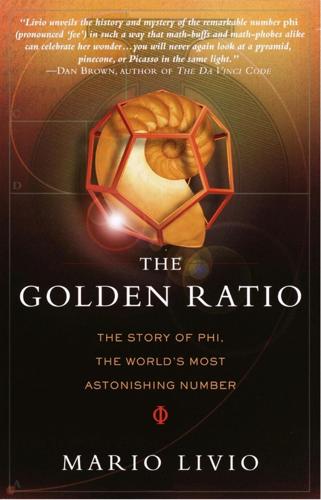
The Golden Ratio: The Story of Phi, the World's Most Astonishing Number
by
Mario Livio
Published 23 Sep 2003
All of these forecasting efforts assume that the Fibonacci sequence and the Golden Ratio somehow provide the keys to the operation of mass psychology. However, this “wave” approach does suffer from some shortcomings. The Elliott “wave” usually is subjected to various (sometimes arbitrary) stretchings, squeezings, and other alterations by hand to make it “forecast” the real-world market. Investors know, however, that even with the application of all the bells and whistles of modern portfolio theory, which is supposed to maximize the returns for a decided-on level of risk, fortunes can be made or lost in a heartbeat. You may have noticed that Elliott's wave interpretation has as one of its ingredients the concept that each part of the curve is a reduced-scale version of the whole, a concept central to fractal geometry.
…
Fig. 111: Erich Lessing/Art Resource, NY Figs. 115–122: Reprinted with permission from Hans Walser, The Golden Section (Washington: The Mathematical Association of America, 2001). Figs. 123–124: Reprinted with permission from Alan H. Guth, The Inflationary Universe (Reading: Addison-Wesley, 1997). Figs. 125–126: Reprinted with permission from R. R. Prechter and A. J. Frost, The Elliott Wave Principle (Gainesville: New Classic Library, 1998). Fig. 127: Reprinted with permission from Robert Fischer, Fibonacci Applications and Strategies for Traders (New York: John Wiley & Sons, 1993). Fig. 128: The Pierpont Morgan Library/Art Resource, NY TEXT: Page 39: Poem on Pythagoras: Reprinted with permission from Steven Cushing.
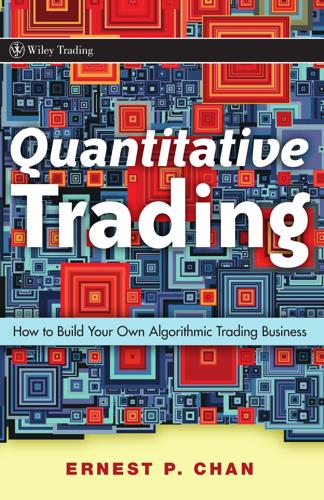
Quantitative Trading: How to Build Your Own Algorithmic Trading Business
by
Ernie Chan
Published 17 Nov 2008
(When the prices are trending, they are also said to have “momentum,” and thus the corresponding trading strategy is often called a momentum strategy.) Some people like to describe the phenomenon that prices can be both mean reverting and trending at the same time as the “fractal” nature of stock prices. Technical analysts or chartists like to use the so-called Elliott wave theory to analyze such phenomena. Still others like to use the discipline of machine learning or artificial intelligence (in particular, techniques such as hidden Markov models, Kalman filter, neural networks, etc.) to discover whether the prices are in a mean-reverting or trending “regime.” I personally have not found such general theories of mean reversion or momentum particularly useful.
…
See Seasonal trading strategies Capacity, 27, 158 Capital availability, effect on choices, 15 Capital allocation, optimal, 95–103 Capital IQ, 136 Chicago Mercantile Exchange (CME), 16 Clarifi, 35 CNBC Plus, 76 Cointegrating augmented Dickey-Fuller test, 128 Cointegration, 126–133 forming a good cointegrating pair of stocks, 128–130 Compustat, 136 Contagion, financial, 104–105 Correlation, 131 Covariance matrix, 97 CSIdata.com, 37 CRSP.com, 37 D Dark-pool liquidity, 71, 73, 88 Data mining, 121 Databases, historical, 37 Data-snooping bias, 25–27, 52–60, 91 out-of-sample testing, 53–55 sample size, 53 sensitivity analysis, 60 and underperformance of live trading, 91 Decimalization of stock prices, 91, 120 Printer: Yet to come INDEX Deleveraging, 152 Despair, 110 Disasters, physical or natural, 108 Discovery (Alphacet), 35, 36, 55, 85, 122–126 charting application, 125 Dollar-neutral portfolio, 43–44 Dow Jones, 36, 75 Drawdown, 20, 21–22, 43, 95 maximum, 21 calculating, 48–50 maximum duration, 21 calculating, 48–50 DTN.com, 37 Dynamic data exchange (DDE) link, 80, 81–82, 83, 84, 85 E ECHOtrade, 70 Econometrics toolbox, 168 The Economist, 10 Elite Trader, 10, 74 Elliott wave theory, 116 E-mini S&P 500 future, 16 Endowment effect, 108–109 Equity curve, 20 Excel, 3, 21, 32, 51, 163 dynamic data exchange (DDE) link to, 80, 81–82, 83, 84, 85 using in automated trading systems, 80, 81, 83, 84, 85 using to avoid look-ahead bias, 51 using to calculate maximum drawdown and maximum drawdown duration, 48 using to calculate Sharpe ratio for long-only strategies, 45–46, 47 P1: JYS ind JWBK321-Chan October 2, 2008 14:7 Printer: Yet to come 177 Index Execution systems, 79–94 automated trading system, advantages of, 79–87 fully automated trading system, building a, 84–87 semiautomated trading system, building a, 81–84 paper trading, testing your system by, 89–90 performance, divergence from expectations, 90–92 transaction costs, minimizing, 87–88 Exit strategy, 140–143 F Factor exposure, 134 Factor models, 133–139 principal component analysis as an example of, 136–139 Factor return, 134 FactSet, 35, 36 Fama-French Three-Factor model, 134–135, 153 Financial web sites and blogs, 10 G GainCapital.com, 37 GARCH toolbox, 168 Gasoline futures, seasonal trade in, 148–151 Gaussian probability distributions, 96, 105 derivation of Kelly formula in, 112–113 Generalized autoregressive conditional heteroskedasticity (GARCH) model, 120 Genesis Securities, 70, 73, 82 Global Alpha fund (Goldman Sachs), 104 Greed, 110–111 H “Half-Kelly” betting, 98, 105–106 High-frequency trading strategies, 151–153 transaction costs, importance of in testing, 152 High-leverage versus high-beta portfolio, 153–154 High watermark, 21, 48 Historical databases errors in, 117 finding and using, 36–43 high and low data, use of, 42–43 split and dividend-adjusted data, 36–40 survivorship bias, 40–42 HQuotes.com, 37, 81 Hulbert, Mark (New York Times), 10 I Information ratio.

Shape: The Hidden Geometry of Information, Biology, Strategy, Democracy, and Everything Else
by
Jordan Ellenberg
Published 14 May 2021
“Man is no less a natural object than the sun and moon,” Elliott wrote, “and his actions too, in their metrical occurrence, are subject to analysis.” Elliott pored through seventy-five years’ worth of the stock ticker, down to its minute-by-minute movements, trying to make the ups and downs resolve into a story that made sense. The result was the Elliott Wave Theory, which posited that the stock market was governed by an interlocking collection of cycles, from the subminuette, which shuttles back and forth every few minutes, to the “grand supercycle,” the first of which started in 1857 and is still ongoing. For any of this to help an investor make money, one needs to know when the market’s about to take a turn for the better or the worse.
…
This might be just another story about a weird old theory from the ash heap of financial history, like those of Roger Babson, who believed Newton’s laws of motion governed the stock market, predicted the great crash of 1929, then predicted the imminent* end of the Depression in 1930, founded Babson College in Massachusetts and Utopia College in Eureka, Kansas (at the geographic center of the continental United States, where he thought it would be safe from the atom bomb), ran for president as the Prohibition Party candidate in 1940, and spent much of the money he made selling stock tips on an attempt to develop an antigravity metal. The difference is that the Elliott Wave Theory is still a going concern. A guide to “technical analysis” from Merrill Lynch includes an entire chapter about it, “The Fibonacci Concept,” which trots out the usual golden ratio sizzle reel: As with all other methods of analysis, the Fibonacci relationship is not 100% reliable.
…
THE NOTES IN THE CHORD This intricate superimposition of hundreds or thousands of interlinked models, geometric progressions or something hairier than that, can seem a little baroque at first, like the pre-Newtonian theory of epicycles in which planetary motion was retrofitted to a complex combination of smaller circular motions layered atop larger ones, wheels rolling on wheels. Or, for that matter, like the Elliott Wave Theory with its small and medium waves wriggling atop the ultra-two-ply-megacycles. But the eigenvalue story is real math, and is everywhere. It’s at the heart of quantum mechanics—there’s a geometry story I wish there were room to tell here. But maybe I’ll tell one small part of it, because it gives me a chance, here at the end of the chapter, to make an actual mathematical definition.

The Land Grabbers: The New Fight Over Who Owns the Earth
by
Fred Pearce
Published 28 May 2012
While that apocalyptic vision might suggest a threat to Emergent’s African assets, Murrin figures that in the run-up to war there will be a lot of profit as commodity scarcity causes prices to soar. He embraces other threats, too. “Climate change means some places in Africa will be drier and others will be wetter. We’ll be looking to take advantage of that,” he says. Murrin also claims to keep ahead of the game by exploiting the Elliott Wave theory of long-term cycles in public mood, alternating between optimism and pessimism. This idea took root when he was in Papua New Guinea, and he discusses it at length in his book, Breaking the Code of History. He says: “There is a tradition that history is about the detail, but I have always believed instead that it is determined on a vast scale, by a specific set of dynamics.
…
Moreover, its apparent randomness is only an illusion: once the sequence of events that we call ‘history’ is shown to be governed by certain behavioural algorithms, we can then discern, with clarity, the degree to which our lives are bound up in numerous interrelationships.” Phew. Payne’s presentations, meanwhile, often include a scary graph showing something called the Kondratiev Cycle, after Nikolai Kondratiev, the Russian economist who invented it. I’m not clear how the Elliott Wave and the Kondratiev Cycle relate, if at all. But her graph shows U.S. commodity prices since 1800, rising and falling in a long cycle with spikes roughly every fifty years. Some have claimed that the supposed cycle is created by technological innovations. Others suggest credit cycles or demographics.
…
Henry), 142 Cambodia, 32, 35, 36, 168, 187–96, 200, 201, 205; economic land concessions, 189, 194 Cambodian League for the Promotion of Human Rights (LICADHO), 192 camels, 219, 283, 285, 286 Cameroon, 21, 88–89, 204, 263–264 Campo Aberto, Brazil, 115, 119 Canada, 27, 110–11, 132, 159, 167, 289; investors in Africa, 48, 73, 90, 238, 241, 246, 248, 249 Carbon Planet, 267 Cargill, 8, 110, 117, 121, 123, 125, 159, 202, 294 Casaccia, Jose Luis, 138 Casado, Carlos, 136 Cayman Islands, 90, 97, 202 Center for International Forestry Research (CIFOR), 178, 250, 268 Central African Republic, 265 Central Equatoria Teak, 47 Central Intelligence Agency (CIA), 43, 143 cerrado, 112, 115–17, 129, 130, 161, 202, 205, 295; colonization since 1960s, 116–17, 123–24; indigenous people and slavery, 117, 119, 122–23; wildlife and biodiversity, 115–16, 118, 120–21, 124, 126 Chaco, 129–39, 150, 154; Brazilian ranchers, 129–31, 134–35; indigenous groups, 133, 134–35, 137–39; wildlife and conservation, 129–31, 134, 135–37, 138–39 Changhae Tapioka, 184 Chavez, President Hugo, 141 Chernobyl, Ukraine, 110 Chicago, vii, 19–20, 116 Chicago Board of Trade (CBOT), 19–20, 25, 27 chiefs, authority of, 11, 33, 45–46, 63, 65, 66, 99–100, 174, 235, 249–50 Chile, 150–51, 153–54 China, vii, 30, 109, 123, 133, 167–68, 170, 172, 178, 199–205, 234, 280, 292; in Africa, 75, 88, 202–4, 234, 265, 175–76, 277, 279, 280; in Asia, 110, 181, 185, 192, 199–201, 202, 205; in Australasia, 159–60; consumer demand, 22, 67, 181, 200–2; future war with West, 95, 201; land grabbing in, 202, 203; in Latin America, 126, 127, 202 China State Farms Agribusiness Corporation, 204 Cholmondeley family, 217 Chongqing Grain Group, 127, 202 Citadel Capital, 48 climate change, viii, x, 22, 95, 130, 243, 267, 291, 292 Club 21, 226–67 cocoa, 27, 84, 97 coffee, 7, 20, 25, 41, 101, 115, 118, 142, 143, 256 Collier, Paul, 291–95, 301 Colombia, vii, 142, 145–47 Coming Anarchy, The (Robert Kaplan), 43 commodity markets, 23, 26, 27, 100, 202, 293 commons, tragedy of the, x, 285 Commonwealth Development Corporation (CDC), 47, 101 Complant International Sugar, 202 Congo-Brazzaville, 88, 89, 227, 234, 264, 265 Congo, Democratic Republic of (DRC), 85, 88, 89, 90, 203, 227 Congolaise Industrielle des Bois (CIB), 265 Congo River, 85, 89 Conservation International (CI), 74, 117, 118, 126, 229 Conservation refugees, 229–30 Conway, Gordon, 295 corruption, 38, 45, 53, 74, 141, 144, 171, 174–75, 194, 257, 267 Costa Rica, 135, 142 Costello, Peter, 192 Cote d’Ivoire (Ivory Coast), 21, 68, 88, 89, 239, 274 Cotton, 37, 199, 202, 236, 238, 256, 265, 275; in Australia, 159–60; in Brazil, 115, 118–19, 124–25, 131; in Ethiopia, 5, 7 Crafar Farms, New Zealand, 160 Craig, David and Ian, 218–19 credit crunch, 20, 24–27, 37, 82, 101 Cuba, 142, 143 Curran, Bryan, 229–30 Daewoo, 205 dairy industry, 57, 59, 111, 126, 133, 189, 202, 224, 260, 283, 285, 298–300; in Gulf, vii, 29–32; in India, 7, 300; in New Zealand, 160, 203 Dangote, Aliko, 239 Danzer Group, 264 Defensores del Chaco, Paraguay, 131, 135 Deng, David, 42–43 Denton, Tim, 101–2 derivatives, financial, 20, 25–26, 93, 96, 100 desertification, 285, 298 Desmond Holdings, 99 Dexion Capital, 110 Dinka, 42, 49 Diouf, Jacques, 34 Doan Nguyen Duc, 200 Doe, Samuel, 66–67, 76, 78 Dominican Republic, 142 Dominion Farms, 53–63 Douglas, Howard Eugene, 44–46 drug trade, 136, 141, 143–44, 146–47, 192 Dubai, 34–35, 37, 83, 157, 211, 231 Edmonds, Phil, 97, 246–47, 258 Egypt, 21, 30, 32, 37, 48–49, 86, 240, 266 Elliott Wave theory, 95 Emergent Asset Management, 93–95, 201, 237 “empty” lands, x, 9, 11, 44, 54, 76, 103, 115–16, 134, 149, 248, 260, 288 Energem, 246 Equatorial Palm Oil (EPO), 81–85, 87, 89–90 Estonia, 109 Ethanol. See biofuels Ethiopia, 3–16, 44, 47, 228–29, 239, 244, 248, 286, 300 European Bank for Reconstruction and Development, 110 European Union (EU), 26, 108, 109, 116, 250; Everything But Arms, 195–6; market for forest products, 69, 177, 185; market for sugar, 187, 195–96, 238 Evans, M.P., 158 Ex-Im Bank, 109, 204 famine, 9, 16, 22, 24, 44, 103, 291, 293 Far East Agricultural Investment, 32–33 Farm Lands of Guinea, 99 Fauna and Flora International, 217 FELDA Holdings, 157 Ferguson, Richard, 291–92, 295 Fernando Po, 66 Feronia Inc., ix, 90 Filadelfia, Paraguay, 133–34 Filer, Colin, 182–86 Finland, 47, 167, 168, 177 Firestone, 66, 69–73, 75, 77, 79, 84 Flora EcoPower, 248 Fonterra, 160, 203 food: export bans, 32, 103, 204; price of, vii, 5, 31–32, 37, 38, 75, 95, 101, 195, 238, 291, 297; 2008 price spike, 19–27, 34, 96, 293; security, 22, 34, 37, 96, 112, 280, 293–94, 296; self-sufficiency, 21, 29–30, 32, 277 Forest Peoples Programme, 229 Forest Stewardship Council, 173, 177 Formosa do Rio Preto, Brazil, 121–22, 124 Fortress conservation, 224, 228, 230 France and French, vii, 30, 103, 109, 193, 201, 217, 273, 274, 299; and timber trade, 67, 88, 263–65 Frayne, Michael, 81–82, 84, 87–88 Friends of the Earth, 176, 245 Friends of Yala Swamp, 62 Fulani, 272, 274–76, 281 Fundacion Tierra, 145 Gabon, 88, 229, 235, 263–65 Gaddafi, Colonel Muammar, 67, 109, 277 Gambella, Ethiopia, 3–16, 44, 47, 49, 239, 244, 288, 289 Garamba National Park, DRC, 226, 227 Georgia, 237 Germany and Germans, 24, 30, 58, 78, 83, 167, 213, 243, 259; German land grabbers, 160, 218, 264, 265; Germans in South America, 117, 131, 132, 134, 138 Getty family, 81–82, 84, 231 Gezira project, Sudan, 37 Ghana, 89, 249–50, 274, 288 Global Witness, 68 goats, 59, 159, 272, 277, 281, 284, 286, 296 Gold, Dan, 97 Golden Agri, 85, 88 Goldman Sachs, vii, 21, 24–25, 93, 97, 110, 111, 154, 158, 203, 237, 240; Goldman Sachs Commodity Index, 25 Gold Star Farms, 249 Grapes of Wrath (John Steinbeck), ix, 123 Great Limpopo Transfrontier Park, 227, 247 Green Advocates, 76 Greenleaf Global, 98 Greenpeace, 263 Green Resources, 48 green revolution, 22, 295, 296 Greenworld BVI, 98 Groundnut Scheme, Tanganyika, 103–4 Grumeti game reserve, Tanzania, 209–210, 259 Grzimek, Bernhard, 213, 230 Guarani, 145 Guatemala, 142–44 Guinea, vii, 21, 75, 76, 99 Guinea Bissau, 204 Guinea Savannah Zone, 9 Guyra Paraguay, 130, 136–37 Haes, Charles de, 223–25 Haiti, 22, 300 Hall, Ruth, 235, 237 Hands, Guy, 97, 158 Hanks, John, 227 Hardin, Garrett, 285 Hasan, Mohamad “Bob,” 172 Hassad Food, 36, 159 Hazim Hazim Chehade, 263 Heart of Darkness (Joseph Conrad), ix, 85, 264 hedge funds, vii, 24, 37, 73, 90, 96, 97, 100, 109, 110, 114, 210, 245 Heilberg, Philippe, 41–45 Herakles Farms, 89 Hickey, Liam, 74–75, 77 hippo grass.

Hedgehogging
by
Barton Biggs
Published 3 Jan 2005
He argued that the growth and decay pattern of humankind’s path through history is not random but a supercycle of three steps forward, two steps back. He also maintained that this sequence was mirrored with exquisite precision by the stock market’s ebb and flows. In the 1960s, Hamilton Bolton, the editor of the Bank Credit Analyst, wrote extensively on the Elliott wave theory; Bob Prechter, who writes a market letter, is another prominent disciple. Using Elliott wave theory analysis, Prechter correctly forecast the bull market of the early 1980s and identified 1987 as a pivotal year. Markets obligingly crashed in 1987, and Prechter became an investment diety with a huge following. In 1990 he wrote a book about impending tidal waves, doom, and gloom, and as far as I know he has been bearish ever since.
…
Like so many other systems, it worked well retrospectively but failed in real time.The guy was one wave too late and got drowned when the Japanese market collapsed in 1990. The trick with the Fibonacci numbers and the stock market has always been in getting the starting point and the wave count right.There are waves within waves, so many Fibonacci disciples try to market themselves as short-term timers. I am skeptical. The record of the Fibonacci–Elliott wave counters is not good, and I think they can get you into serious trouble with their dogma. FIBONACCI NUMBERS ARE POWERFUL— BUT TOO MYSTERIOUS FOR ANALYZING MARKETS Thus, with some unhappiness I met with the Fibonacci guy from Maine. He was young, clean-cut, enthusiastic, and incredibly sincere.
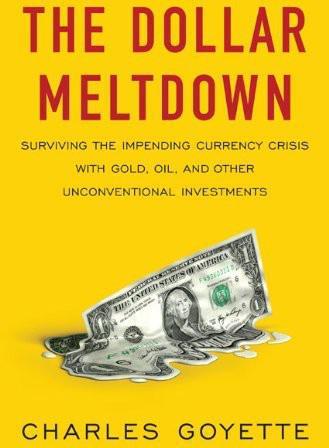
The Dollar Meltdown: Surviving the Coming Currency Crisis With Gold, Oil, and Other Unconventional Investments
by
Charles Goyette
Published 29 Oct 2009
Williams also makes a good deal of his background material and reporting on flawed economic data available in open material for nonsubscribers on his Web site. Highly informative, highly recommended. Information at www.shadowstats.com. The Elliot Wave Theorist Robert R. Prechter, Jr., is president of Elliott Wave International, which publishes analysis of global stock, bond, currency, metals, and energy markets based on swings in market psychology from extremes of pessimism to optimism. He has been publishing The Elliott Wave Theorist since 1979. I consider his descriptions of the long-term trends in public and investor moods to be superior. Published twelve times a year; $20 per month. www.elliottwave.com. The High-Tech Strategist Fred Hickey edits this monthly newsletter.

Present Shock: When Everything Happens Now
by
Douglas Rushkoff
Published 21 Mar 2013
More recently, in early 2010, the world’s leading forecaster applying fractals to markets, Robert Prechter, called for the market to enter a decline of such staggering proportions that it would dwarf anything that has happened in the past three hundred years.16 Prechter bases his methodology on the insights of a 1930s economist, Ralph Nelson Elliott, who isolated a number of the patterns that seem to recur in market price data. They didn’t always occur over the same timescale or amplitude, but they did have the same shape. And they combined to form larger and larger versions of themselves at higher levels, in a highly structured progression. Prechter calls this progression the Elliott Wave. We may as well call it fractalnoia. For not only is the pattern supposed to repeat on different scales and in progressively larger time frames; it’s also supposed to be repeating horizontally across different industries and aspects of human activity. Prechter titled his report on fractals and the stock market “The Human Social Experience Forms a Fractal.”
…
See also specific topic Disney theme parks, 186–88 DNA, 85, 258 Doctorow, Cory, 217 Domeier, Rick, 94 drone pilots, 7, 120–22 drugs, 92, 98, 99, 103, 124 Dulles, John Foster, 89 Dunbar, Kevin, 204 Duncan Yo-Yo, 108 Dungeons & Dragons (game), 60–61, 60n Dyson, Freeman, 133, 135, 141 Earth, first photographs of, 223–24 Eastern-Westerner comparison, Nisbett’s, 234–35 economy/economics: behavioral, 5–6; cashless societies and, 184; change and, 167; digiphrenia and, 97; expansion of, 170–80; fractalnoia and, 206, 226, 227, 228–29; global, 206; new “now” and, 3, 4, 5–6; overwinding and, 136, 145–49, 161, 163–65, 167–68, 171, 184–85; stages in human development and, 80; storage-based, 184; time and, 80. See also consumers; money/ currency Edelman, Richard, 50 efficiency, 81, 82, 95, 188 Eisner, Michael, 186, 187, 188 elections of 2008, 18 Elliott, Ralph Nelson, 229 Elliott Wave, 229–30 email, 2, 69–70, 99, 117–18, 119–20, 143–45, 264 emergence concept, 227, 262, 263 empathy, 236, 237 end/endings: apocalypto and, 7, 247, 250, 252, 253–54, 261, 262; fractalnoia and, 199; games and, 59, 61–62, 67; hardest part of living in present shock and, 247; narrative collapse and, 34, 56, 59, 61–62, 66, 67; new “now” and, 4; of time, 250, 252, 253–54, 262; traditional storytelling and, 62 Energy Department, U.S., 54 energy, renewable, 189–91 entertainment, 21.
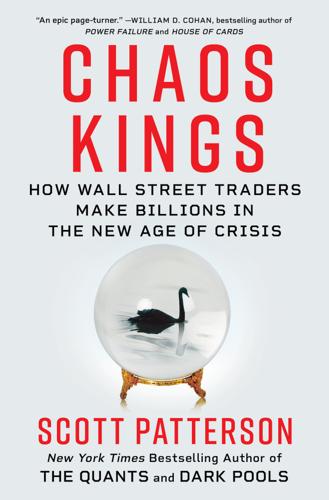
Chaos Kings: How Wall Street Traders Make Billions in the New Age of Crisis
by
Scott Patterson
Published 5 Jun 2023
Wall Street has always been rife with visionaries claiming to have discovered hidden patterns in the market’s warp and weft. The Elliott wave principle, propagated in the early twentieth century by accountant Ralph Nelson Elliott, claimed to predict market cycles and trends by pinpointing extremes in prices and investor psychology. Such cycles, the theory goes, move in discernible waves that slosh up and down—bubbles and crashes. Sornette himself has said that his model in ways parallels Elliott waves. But while technical analysis had at times enjoyed short-term success, over the long run there was little evidence investors could use it to accurately predict the market.
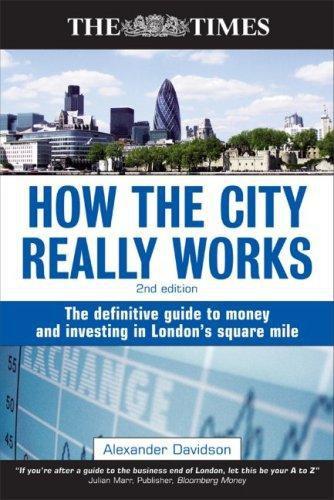
How the City Really Works: The Definitive Guide to Money and Investing in London's Square Mile
by
Alexander Davidson
Published 1 Apr 2008
Technical analysis caters also for those who shun simplicity. William D Gann was a technician with a unique, highly mathematical form of technical analysis linking price and time proportionately, with lashings of special numbers and astrological inferences. Courses in Gann theory tend not to come cheap. Elliott Wave Theory is another tough nut to crack. It finds that the market always rises in five waves and falls in three, and so assumes a perpetual long-term bull market. The proportional relationship of the waves is linked to Fibonacci numbers, which have a mathematical relationship claimed to be deep-rooted in nature.
…
Index 419 fraud 204 9/11 terrorist attacks 31, 218, 242, 243, 254, 257 Abbey National 22 ABN AMRO 103 accounting and governance 232–38 scandals 232 Accounting Standards Board (ASB) 236 administration 17 Allianz 207 Alternative Investment Market (AIM) 44–45, 131, 183, 238 Amaranth Advisors 170 analysts 172–78 fundamental 172–74 others 177–78 Spitzer impact 174–75 technical 175–77 anti-fraud agencies Assets Recovery Agency 211–13 City of London Police 209 Financial Services Authority 208 Financial Crime and Intelligence Division 208 Insurance Fraud Bureau 209 Insurance Fraud Investigators Group 209 International Association of Insurance Fraud Agencies 207, 210, 218 National Criminal Intelligence Service 210 Serious Fraud Office 213–15 Serious Organised Crime Agency 210–11 asset finance 24–25 Association of Investment Companies 167 backwardation 101 bad debt, collection of 26–28 Banco Santander Central Hispano 22 Bank for International Settlements (BIS) 17, 27, 85, 98, 114 bank guarantee 23 Bank of Credit and Commerce International (BCCI) 10, 214 Bank of England 6, 10–17 Court of the 11 credit risk warning 98 framework for sterling money markets 81 Governor 11, 13, 14 history 10, 15–16 Inflation Report 14 inflation targeting 12–13 interest rates and 12 international liaison 17 lender of last resort 15–17 Market Abuse Directive (MAD) 16 monetary policy and 12–15 Monetary Policy Committee (MPC) 13–14 Open-market operations 15, 82 repo rate 12, 15 role 11–12 RTGS (Real Time Gross Settlement) 143 statutory immunity 11 supervisory role 11 Bank of England Act 1988 11, 12 Bank of England Quarterly Model (BEQM) 14 Banking Act 1933 see Glass-Steagall Act banks commercial 5 investment 5 Barclays Bank 20 Barings 11, 15, 68, 186, 299 Barlow Clowes case 214 Barron’s 99 base rate see repo rate Basel Committee for Banking Supervision (BCBS) 27–28 ____________________________________________________ INDEX 303 Basel I 27 Basel II 27–28, 56 Bear Stearns 95, 97 BearingPoint 97 bill of exchange 26 Bingham, Lord Justice 10–11 Blue Arrow trial 214 BNP Paribas 145, 150 bond issues see credit products book runners 51, 92 Borsa Italiana 8, 139 bps 90 British Bankers’ Association 20, 96, 97 building societies 22–23 demutualisation 22 Building Societies Association 22 Capital Asset Pricing Model (CAPM) see discounted cash flow analysis capital gains tax 73, 75, 163, 168 capital raising markets 42–46 mergers and acquisitions (M&A) 56–58 see also flotation, bond issues Capital Requirements Directive 28, 94 central securities depository (CSD) 145 international (ICSD) 145 Central Warrants Trading Service 73 Chancellor of the Exchequer 12, 13, 229 Chicago Mercantile Exchange 65 Citigroup 136, 145, 150 City of London 4–9 Big Bang 7 definition 4 employment in 8–9 financial markets 5 geography 4–5 history 6–7 services offered 4 world leader 5–6 clearing 140, 141–42 Clearing House Automated Payment System (CHAPS) 143 Clearstream Banking Luxembourg 92, 145 commercial banking 5, 18–28 bad loans and capital adequacy 26–28 banking cards 21 building societies 22–23 credit collection 25–26 finance raising 23–25 history 18–19 overdrafts 23 role today 19–21 commodities market 99–109 exchange-traded commodities 101 fluctuations 100 futures 100 hard commodities energy 102 non-ferrous metals 102–04 precious metal 104–06 soft commodities cocoa 107 coffee 106 sugar 107 Companies Act 2006 204, 223, 236 conflict of interests 7 consolidation 138–39 Consumer Price Index (CPI) 13 contango 101 Continuous Linked Settlement (CLS) 119 corporate governance 223–38 best practice 231 Cadbury Code 224 Combined Code 43, 225 compliance 230 definition 223 Directors’ Remuneration Report Regulations 226 EU developments 230 European auditing rules 234–35 Greenbury Committee 224–25 Higgs and Smith reports 227 International Financial Reporting Standards (IFRS) 237–38 Listing Rules 228–29 Model Code 229 Myners Report 229 OECD Principles 226 operating and financial review (OFR) 235– 36 revised Combined Code 227–28 Sarbanes–Oxley Act 233–34 Turnbull Report 225 credit cards 21 zero-per-cent cards 21 credit collection 25–26 factoring and invoice discounting 26 trade finance 25–26 credit derivatives 96–97 back office issues 97 credit default swap (CDS) 96–97 credit products asset-backed securities 94 bonds 90–91 collateralised debt obligations 94–95 collateralised loan obligation 95 covered bonds 93 equity convertibles 93 international debt securities 92–93 304 INDEX ____________________________________________________ junk bonds 91 zero-coupon bonds 93 credit rating agencies 91 Credit Suisse 5, 136, 193 CREST system 141, 142–44 dark liquidity pools 138 Debt Management Office 82, 86 Department of Trade and Industry (DTI) 235, 251, 282 derivatives 60–77 asset classes 60 bilateral settlement 66 cash and 60–61 central counterparty clearing 65–66 contracts for difference 76–77, 129 covered warrants 72–73 futures 71–72 hedging and speculation 67 on-exchange vs OTC derivatives 63–65 options 69–71 Black-Scholes model 70 call option 70 equity option 70–71 index options 71 put option 70 problems and fraud 67–68 retail investors and 69–77 spread betting 73–75 transactions forward (future) 61–62 option 62 spot 61 swap 62–63 useful websites 75 Deutsche Bank 136 Deutsche Börse 64, 138 discounted cash flow analysis (DCF) 39 dividend 29 domestic financial services complaint and compensation 279–80 financial advisors 277–78 Insurance Mediation Directive 278–79 investments with life insurance 275–76 life insurance term 275 whole-of-life 274–75 NEWICOB 279 property and mortgages 273–74 protection products 275 savings products 276–77 Dow theory 175 easyJet 67 EDX London 66 Egg 20, 21 Elliott Wave Theory 176 Enron 67, 114, 186, 232, 233 enterprise investment schemes 167–68 Equiduct 133–34, 137 Equitable Life 282 equities 29–35 market indices 32–33 market influencers 40–41 nominee accounts 31 shares 29–32 stockbrokers 33–34 valuation 35–41 equity transparency 64 Eurex 64, 65 Euro Overnight Index Average (EURONIA) 85 euro, the 17, 115 Eurobond 6, 92 Euroclear Bank 92, 146, 148–49 Euronext.liffe 5, 60, 65, 71 European Central Bank (ECB) 16, 17, 84, 148 European Central Counterparty (EuroCCP) 136 European Code of Conduct 146–47, 150 European Exchange Rate Mechanism 114 European Harmonised Index of Consumer Prices 13 European Union Capital Requirements Directive 199 Market Abuse Directive (MAD) 16, 196 Market in Financial Instruments Directive (MiFID) 64, 197–99 Money Laundering Directive 219 Prospectus Directive 196–97 Transparency Directive 197 exchange controls 6 expectation theory 172 Exxon Valdez 250 factoring see credit collection Factors and Discounters Association 26 Fair & Clear Group 145–46 Federal Deposit Insurance Corporation 17 Federation of European Securities Exchanges 137 Fighting Fraud Together 200–01 finance, raising 23–25 asset 24–25 committed 23 project finance 24 recourse loan 24 syndicated loan 23–24 uncommitted 23 Financial Action Task Force on Money Laundering (FATF) 217–18 financial communications 179–89 ____________________________________________________ INDEX 305 advertising 189 corporate information flow 185 primary information providers (PIPs) 185 investor relations 183–84 journalists 185–89 public relations 179–183 black PR’ 182–83 tipsters 187–89 City Slickers case 188–89 Financial Ombudsman Service (FOS) 165, 279–80 financial ratios 36–39 dividend cover 37 earnings per share (EPS) 36 EBITDA 38 enterprise multiple 38 gearing 38 net asset value (NAV) 38 price/earnings (P/E) 37 price-to-sales ratio 37 return on capital employed (ROCE) 38 see also discounted cash flow analysis Financial Reporting Council (FRC) 224, 228, 234, 236 Financial Services Act 1986 191–92 Financial Services Action Plan 8, 195 Financial Services and Markets Act 2001 192 Financial Services and Markets Tribunal 94 Financial Services Authority (FSA) 5, 8, 31, 44, 67, 94, 97, 103, 171, 189, 192–99 competition review 132 insurance industry 240 money laundering and 219 objectives 192 regulatory role 192–95 powers 193 principles-based 194–95 Financial Services Compensation Scheme (FSCS) 17, 165, 280 Financial Services Modernisation Act 19 financial services regulation 190–99 see also Financial Services Authority Financial Times 9, 298 First Direct 20 flipping 53 flotation beauty parade 51 book build 52 early secondary market trading 53 grey market 52, 74 initial public offering (IPO) 47–53 pre-marketing 51–52 pricing 52–53 specialist types of share issue accelerated book build 54 bought deal 54 deeply discounted rights issue 55 introduction 55 placing 55 placing and open offer 55 rights issues 54–55 underwriting 52 foreign exchange 109–120 brokers 113 dealers 113 default risk 119 electronic trading 117 exchange rate 115 ICAP Knowledge Centre 120 investors 113–14 transaction types derivatives 116–17 spot market 115–16 Foreign Exchange Joint Standing Committee 112 forward rate agreement 85 fraud 200–15 advanced fee frauds 204–05 boiler rooms 201–04 Regulation S 202 future regulation 215 identity theft 205–06 insurance fraud 206–08 see also anti-fraud agencies Fraud Act 2006 200 FTSE 100 32, 36, 58, 122, 189, 227, 233 FTSE 250 32, 122 FTSE All-Share Index 32, 122 FTSE Group 131 FTSE SmallCap Index 32 FTSE Sterling Corporate Bond Index 33 Futures and Options Association 131 Generally Accepted Accounting Principles (GAAP) 237, 257 gilts 33, 86–88 Giovanni Group 146 Glass-Steagall Act 7, 19 Global Bond Market Forum 64 Goldman Sachs 136 government bonds see gilts Guinness case 214 Halifax Bank 20 hedge funds 8, 77, 97, 156–57 derivatives-based arbitrage 156 fixed-income arbitrage 157 Hemscott 35 HM Revenue and Customs 55, 211 HSBC 20, 103 Hurricane Hugo 250 306 INDEX ____________________________________________________ Hurricane Katrina 2, 67, 242 ICE Futures 5, 66, 102 Individual Capital Adequacy Standards (ICAS) 244 inflation 12–14 cost-push 12 definition 12 demand-pull 12 quarterly Inflation Report 14 initial public offering (IPO) 47–53 institutional investors 155–58 fund managers 155–56 hedge fund managers 156–57 insurance companies 157 pension funds 158 insurance industry London and 240 market 239–40 protection and indemnity associations 241 reform 245 regulation 243 contingent commissions 243 contract certainty 243 ICAS and Solvency II 244–45 types 240–41 underwriting process 241–42 see also Lloyd’s of London, reinsurance Intercontinental Exchange 5 interest equalisation tax 6 interest rate products debt securities 82–83, 92–93 bill of exchange 83 certificate of deposit 83 debt instrument 83 euro bill 82 floating rate note 83 local authority bill 83 T-bills 82 derivatives 85 forward rate agreements (FRAs) 85–86 government bonds (gilts) 86–89 money markets 81–82 repos 84 International Financial Reporting Standards (IFRS) 58, 86, 173, 237–38 International Financial Services London (IFSL) 5, 64, 86, 92, 112 International Monetary Fund 17 International Securities Exchange 138 International Swap Dealers Association 63 International Swaps and Derivatives Association 63 International Underwriting Association (IUA) 240 investment banking 5, 47–59 mergers and acquisitions (M&A) 56–58 see also capital raising investment companies 164–69 real estate 169 split capital 166–67 venture capital 167–68 investment funds 159–64 charges 163 investment strategy 164 fund of funds scheme 164 manager-of-managers scheme 164 open-ended investment companies (OEICs) 159 selection criteria 163 total expense ratio (TER) 164 unit trusts 159 Investment Management Association 156 Investment Management Regulatory Organisation 11 Johnson Matthey Bankers Limited 15–16 Joint Money Laundering Steering Group 221 KAS Bank 145 LCH.Clearnet Limited 66, 140 letter of credit (LOC) 23, 25–26 liability-driven investment 158 Listing Rules 43, 167, 173, 225, 228–29 Lloyd’s of London 8, 246–59 capital backing 249 chain of security 252–255 Central Fund 253 Corporation of Lloyd’s 248–49, 253 Equitas Reinsurance Ltd 251, 252, 255–56 Franchise Performance Directorate 256 future 258–59 Hardship Committee 251 history 246–47, 250–52 international licenses 258 Lioncover 252, 256 Member’s Agent Pooling Arrangement (MAPA) 249, 251 Names 248, one-year accounting 257 regulation 257 solvency ratio 255 syndicate capacity 249–50 syndicates 27 loans 23–24 recourse loan 24 syndicated loan 23–24 London Interbank Offered Rate (LIBOR) 74, 76 ____________________________________________________ INDEX 307 London Stock Exchange (LSE) 7, 8, 22, 29, 32, 64 Alternative Investment Market (AIM) 32 Main Market 42–43, 55 statistics 41 trading facilities 122–27 market makers 125–27 SETSmm 122, 123, 124 SETSqx 124 Stock Exchange Electronic Trading Service (SETS) 122–25 TradElect 124–25 users 127–29 Louvre Accord 114 Markets in Financial Instruments Directive (MiFID) 64, 121, 124, 125, 130, 144, 197–99, 277 best execution policy 130–31 Maxwell, Robert 186, 214, 282 mergers and acquisitions 56–58 current speculation 57–58 disclosure and regulation 58–59 Panel on Takeovers and Mergers 57 ‘white knight’ 57 ‘white squire’ 57 Merrill Lynch 136, 174, 186, 254 money laundering 216–22 Egmont Group 218 hawala system 217 know your client (KYC) 217, 218 size of the problem 222 three stages of laundering 216 Morgan Stanley 5, 136 multilateral trading facilities Chi-X 134–35, 141 Project Turquoise 136, 141 Munich Re 207 Nasdaq 124, 138 National Strategy for Financial Capability 269 National Westminster Bank 20 Nationwide Building Society 221 net operating cash flow (NOCF) see discounted cash flow analysis New York Federal Reserve Bank (Fed) 16 Nomads 45 normal market share (NMS) 132–33 Northern Rock 16 Nymex Europe 102 NYSE Euronext 124, 138, 145 options see derivatives Oxera 52 Parmalat 67, 232 pensions alternatively secured pension 290 annuities 288–89 occupational pension final salary scheme 285–86 money purchase scheme 286 personal account 287 personal pension self-invested personal pension 288 stakeholder pension 288 state pension 283 unsecured pension 289–90 Pensions Act 2007 283 phishing 200 Piper Alpha oil disaster 250 PLUS Markets Group 32, 45–46 as alternative to LSE 45–46, 131–33 deal with OMX 132 relationship to Ofex 46 pooled investments exchange-traded funds (ETF) 169 hedge funds 169–71 see also investment companies, investment funds post-trade services 140–50 clearing 140, 141–42 safekeeping and custody 143–44 registrar services 144 settlement 140, 142–43 real-time process 142 Proceeds of Crime Act 2003 (POCA) 211, 219, 220–21 Professional Securities Market 43–44 Prudential 20 purchasing power parity 118–19 reinsurance 260–68 cat bonds 264–65 dispute resolution 268 doctrines 263 financial reinsurance 263–64 incurred but not reported (IBNR) claims insurance securitisation 265 non-proportional 261 offshore requirements 267 proportional 261 Reinsurance Directive 266–67 retrocession 262 types of contract facultative 262 treaty 262 retail banking 20 retail investors 151–155 Retail Prices Index (RPI) 13, 87 264 308 INDEX ____________________________________________________ Retail Service Provider (RSP) network Reuters 35 Royal Bank of Scotland 20, 79, 221 73 Sarbanes–Oxley Act 233–34 securities 5, 29 Securities and Futures Authority 11 self-regulatory organisations (SROs) 192 Serious Crime Bill 213 settlement 11, 31, 140, 142–43 shareholder, rights of 29 shares investment in 29–32 nominee accounts 31 valuation 35–39 ratios 36–39 see also flotation short selling 31–32, 73, 100, 157 Society for Worldwide Interbank Financial Telecommunications (SWIFT) 119 Solvency II 244–245 Soros, George 114, 115 Specialist Fund Market 44 ‘square mile’ 4 stamp duty 72, 75, 166 Sterling Overnight Index Average (SONIA) 85 Stock Exchange Automated Quotation System (SEAQ) 7, 121, 126 Stock Exchange Electronic Trading Service (SETS) see Lloyd’s of London stock market 29–33 stockbrokers 33–34 advisory 33 discretionary 33–34 execution-only 34 stocks see shares sub-prime mortgage crisis 16, 89, 94, 274 superequivalence 43 suspicious activity reports (SARs) 212, 219–22 swaps market 7 interest rates 56 swaptions 68 systematic internalisers (SI) 137–38 Target2-Securities 147–48, 150 The Times 35, 53, 291 share price tables 36–37, 40 tip sheets 33 trading platforms, electronic 80, 97, 113, 117 tranche trading 123 Treasury Select Committee 14 trend theory 175–76 UBS Warburg 103, 136 UK Listing Authority 44 Undertakings for Collective Investments in Transferable Securities (UCITS) 156 United Capital Asset Management 95 value at risk (VAR) virtual banks 20 virt-x 140 67–68 weighted-average cost of capital (WACC) see discounted cash flow analysis wholesale banking 20 wholesale markets 78–80 banks 78–79 interdealer brokers 79–80 investors 79 Woolwich Bank 20 WorldCom 67, 232 Index of Advertisers Aberdeen Asset Management PLC xiii–xv Birkbeck University of London xl–xlii BPP xliv–xlvi Brewin Dolphin Investment Banking 48–50 Cass Business School xxi–xxiv Cater Allen Private Bank 180–81 CB Richard Ellis Ltd 270–71 CDP xlviii–l Charles Schwab UK Ltd lvi–lviii City Jet Ltd x–xii The City of London inside front cover EBS Dealing Resource International 110–11 Edelman xx ESCP-EAP European School of Management vi ICAS (The Inst. of Chartered Accountants of Scotland) xxx JP Morgan Asset Management 160–62 London Business School xvi–xviii London City Airport vii–viii Morgan Lewis xxix Securities & Investments Institute ii The Share Centre 30, 152–54 Smithfield Bar and Grill lii–liv TD Waterhouse xxxii–xxxiv University of East London xxxvi–xxxviii
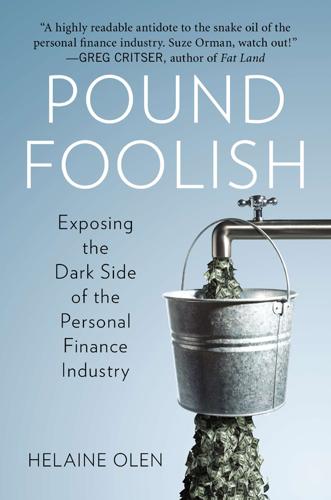
Pound Foolish: Exposing the Dark Side of the Personal Finance Industry
by
Helaine Olen
Published 27 Dec 2012
It costs, of course, but what’s a little bit of money when a guru is guaranteeing you a spot in a lifeboat being lowered from the economic Titanic? Almost all sellers of doom are excellent marketers. Many send out almost daily e-mail blasts, like Robert Prechter, whose company promotes the impossibly complicated Elliott Wave, a creation of a Depression-era accountant that plots public mood in numerical waves, using the patterns to predict stock market returns. If you are wondering, the Elliott Wave most recently predicted that the Dow would fall to one thousand and oil to $10 a barrel. There is also a conference circuit, including the almost forty-year-old New Orleans Investment Conference (founded in 1973) and more recent entrants such as Agora Financials annual July gathering in Vancouver, which offers up “actionable investment ideas.”
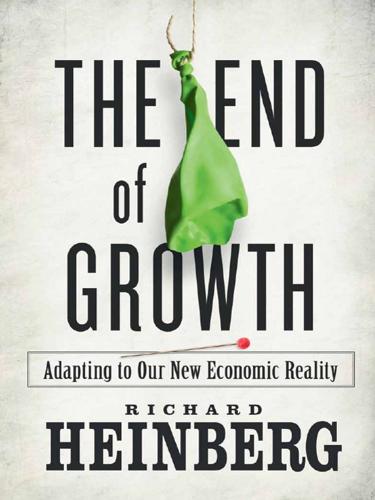
The End of Growth: Adapting to Our New Economic Reality
by
Richard Heinberg
Published 1 Jun 2011
See Herman Daly and John Cobb, For the Common Good (Boston: Beacon Press, 1994), pp. 97–120. 11. For a further discussion of this point see Daly and Cobb, op. cit. 12. A periodically updated discussion of the business cycle from various points of view is available at Wikipedia. 13. Though not according to economists who subscribe to the Elliott Wave theory. See A. J. Frost and Robert Prechter, Elliott Wave Principle: Key to Market Behavior (Gainesville, GA: New Classics Library, 2006). 14. This appears to be the opposite of what is happening now — money is tight but interest rates are low. The current situation exists because the Federal Reserve is deliberately keeping interest rates low to stimulate economic activity. 15.
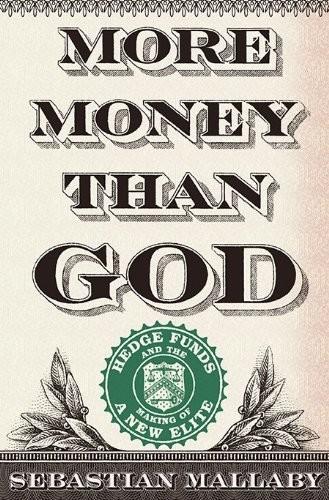
More Money Than God: Hedge Funds and the Making of a New Elite
by
Sebastian Mallaby
Published 9 Jun 2010
Kondratiev’s teachings had helped Cilluffo to anticipate the crash of 1973, which presumably meant that the next cataclysm was not due until 1997; yet in 1987 Jones nonetheless believed that the theory reinforced the case that “total rock and roll” was imminent. Jones was even more enamored of Elliott wave analysis, as expounded by an investment guru named Robert Prechter. The guru asserted with great confidence that stocks would experience one last upward explosion before plunging at least 90 percent: It would be the greatest crash since the bursting of the South Sea bubble in England in 1720. Jones told one interviewer, apparently in all sincerity, “I attribute a lot of my own success to the Elliott Wave approach.”11 But Prechter’s predictions of disaster were wildly overblown, and even Jones agreed that Prechter had no way of pinpointing when the crash would happen.12 The truth was that Jones’s trading profits came from agile short-term moves, not from understanding multidecade supercycles whose existence was dubious.
…
Jones also said, “I consider myself a premier market opportunist. That means I develop an idea on the market and pursue it from a very low risk standpoint until I have repeatedly been proven wrong, or until I change my viewpoint.” See Schwager, Market Wizards, p. 129. Putting Jones’s theorizing about Elliott waves further into perspective, Jones says, “The whole concept of the investment manager sitting up there and making all these incredible intellectual decisions about which way the market’s going to go. I don’t want that guy running my money because he doesn’t have the competitive nature that’s necessary to be a winner in this game.” 14.
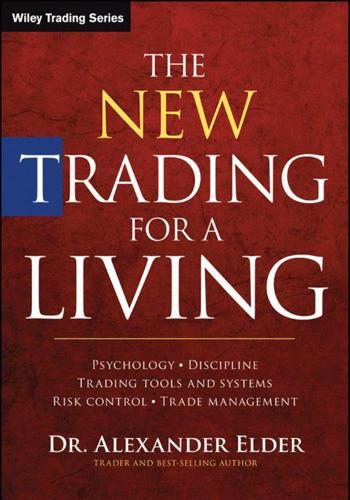
The New Trading for a Living: Psychology, Discipline, Trading Tools and Systems, Risk Control, Trade Management
by
Alexander Elder
Published 28 Sep 2014
The reigning period of each guru coincides with a major bull market in the United States. A market cycle guru forecasts rallies and declines. Each correct forecast increases his fame and prompts even more people to buy or sell when he issues his pronouncements. A market cycle guru has a pet theory about the market. That theory—cycles, volume, Elliott Wave, whatever—is usually developed several years prior to reaching stardom. At first, the market refuses to follow an aspiring guru's pet theory. Then the market changes and for several years comes in gear with the guru's calls. That is when the guru's star rises high above the marketplace. Compare this to what happens to fashion models as public tastes change.
…
Engel, Louis, How to Buy Stocks (1953) (New York: Bantam Books, 1977). Freud, Sigmund, Group Psychology and the Analysis of the Ego (1921) (London: Hogarth Press, 1974). Friedman, Milton, Essays in Positive Economics (Chicago: The University of Chicago Press, 1953). Frost, A. J., and R. R. Prechter, Jr., Elliott Wave Principle (Gainesville, GA: New Classics Library, 1978). Gajowiy, Nils, Personal communication, 2012. Gallacher, William, Winner Takes All—A Privateer's Guide to Commodity Trading (Toronto: Midway Publications, 1983). Gann, W. D., How to Make Profits in Commodities (Chicago: W. D. Gann Holdings, 1951).
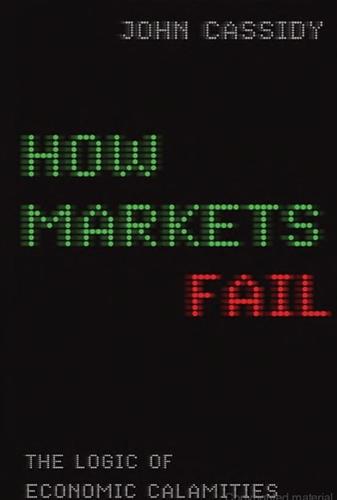
How Markets Fail: The Logic of Economic Calamities
by
John Cassidy
Published 10 Nov 2009
That evening taught me a couple of lessons about Wall Street I haven’t forgotten: things aren’t always what they seem; and the interests of financial insiders often differ from those of regular investors. In retrospect, the size of the fall in the market wasn’t very surprising, only its rapidity. The Dow had more than doubled in three years, prices had shot well ahead of earnings, and a number of commentators, such as Elaine Garzarelli, of Shearson Lehman, and Robert Prechter, of The Elliott Wave Theorist newsletter, had issued sell warnings. To the economics profession, though, the crash came as a thunderbolt. According to the efficient market hypothesis, which was then at the zenith of its popularity, big market moves happen only in response to news that has major implications for corporate earnings.
…
Easterbrook, Frank eBay Ebbers, Bernie Ebenstein, Lanny École Normale Supérieure Econometrica Economic Consequences of the Peace, The (Keynes) “Economics and Knowledge” (Hayek) Economics Club of New York Economics of Welfare, The (Pigou) Economist, The Economy.com Edgeworth, Francis Ysidro Edinburgh University Edison, Thomas efficient market hypothesis Lucas’s adoption for entire economy of Mandelbrot’s strictures on speculative bubbles and discrediting of Eichengreen, Barry Einstein, Albert Eisenhower, Dwight D. Eisner, Michael Elements of Pure Economics (Walras) Elizabeth II, Queen of England Elliott Wave Theorist newsletter Ellison, Glenn Ellsberg, Daniel Emory University Engels, Friedrich England: enclosure of common lands in street markets in; see also United Kingdom Enron Environmental Protection Agency (EPA) Equifax equilibrium, theory of, see general equilibrium theory Erasmus, Desiderius Erhard, Ludwig Euromoney European Central Bank European Union “Existence of an Equilibrium for a Competitive Economy” (Arrow and Debreu) externalities; see also spillovers Extraordinary Popular Delusions and the Madness of Crowds (Mackay) Exxon Exxon Mobil Facebook Failure of Capitalism, A (Posner) Fama, Eugene Fatal Conceit, The (Hayek) Federal Bureau of Investigation (FBI) Federal Deposit Insurance Corporation (FDIC) Federal Home Loan Mortgage Corporation (Freddie Mac) Federal National Mortgage Association (Fannie Mae) Federal Reserve and Black Monday stockmarket crash derivatives markets and Division of Monetary Affairs Friedman on role in Great Depression of funds rate cuts by housing bubble and loans to banks from Lucas on Minsky on regulation of banks by Open Market Committee (FOMC) regional banks of and shadow banking system and subprime mortgages and Wall Street bailouts Federal Reserve Act (1913) Federal Trade Commssion FICO scale Fidelity Independent Adviser Fidelity Investments Magellan Fund Financial Accounting Standards Board Financial Analysts Journal Financial Markets, Money and the Real World (Davidson) Financial Services Modernization Act (1999) Financial Services Regulatory Relief Act (2006) Financial Shock (Zandi) Financial Times Finland First Franklin Loan Services FirstPlus Financial Group First Union Bank Fisher, Carl Fisher, Irving Fisher, Richard Fitch Ratings Flaubert, Gustave Flood, Merrill Foley, Duncan Fons, Jerome S.
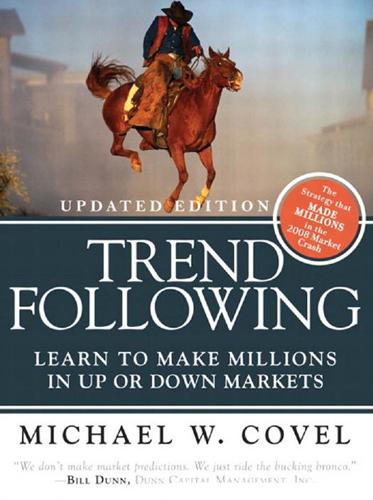
Trend Following: How Great Traders Make Millions in Up or Down Markets
by
Michael W. Covel
Published 19 Mar 2007
So they buy and hold no matter what happens in the mean time. There is the old trading parable about fishing and revenge. You are out at the fishing hole. The big one gets away, and you throw You will run out of money before a guru runs out of indicators. Neal T. Weintraub 234 There is little point in exploring the Elliott Wave Theory because it is not a theory at all, but rather the banal observation that a price chart comprises a series of peaks and troughs. Depending on the time scale you use, there can be as many peaks and troughs as you care to imagine.7 Trend Following (Updated Edition): Learn to Make Millions in Up or Down Markets your hook back in.
…
It’s a delusion to think that you or any one else can know where the market is going. I have sat through hundreds of hours of seminars in which the presenter made it seem as if he or she had some secret method of divining where the markets were going. Either they were deluded or they were putting us on. Most Elliott Wave practitioners, cycle experts, or Fibonacci time traders will try to predict when the market will move, presumably in the direction they have also predicted. I personally have not been able to figure out how to know when the market is going to move. And you know what? When I tried to predict, I was usually wrong, and I invariably missed the big move I was anticipating, because it wasn’t time.
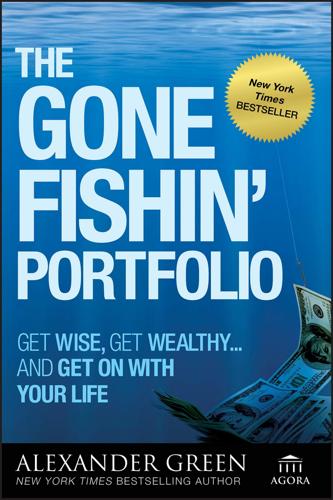
The Gone Fishin' Portfolio: Get Wise, Get Wealthy...and Get on With Your Life
by
Alexander Green
Published 15 Sep 2008
Of course, whenever we do experience a genuine bear market, or even a minor correction, they’re quick to remind you that they “told you so.” Unfortunately, no matter how low the market goes, these commentators are forever insisting that the bear market is just warming up. When the Dow dropped from over 11,000 in 2000 to roughly 7,200 in 2002, many perma-bears insisted it was still just the beginning of the end. Some of them, like Elliott Wave theorist Bob Precheter, were predicting 5,000 on the Dow—or less. Four years later, the market was up nearly 80%. The last group—the true market timers—I call roadkill. These are the timers who switch from bullish to bearish and back again. I’ve named them for the inevitable result of all their road crossings.
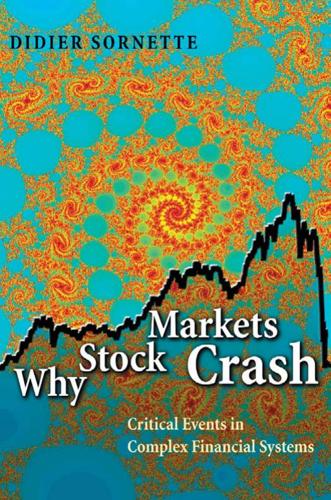
Why Stock Markets Crash: Critical Events in Complex Financial Systems
by
Didier Sornette
Published 18 Nov 2002
The many kinds of structures observed on stock price trajectories, such as trends, cycles, booms, and bursts, have been the object of extensive analysis by the scientists of the social and financial fields as well as by professional analysts and traders. The work of the latter category of analysts has led to a fantastic lexicon of these patterns with colorful names, such as “head and shoulder,” “doublebottom,” “hanging-man lines,” “the morning star,” “Elliott waves,” and so on (see, for instance, [316]). Investments in the stock market are based on a quite straightforward rule: if you expect the market to go up in the future, you should buy (this is referred to as being “long” in the market) and hold the stock until you expect the trend to change direction; if you expect the market to go down, you should stay out of it, sell if you can (this is referred to as being “short” of the market) by borrowing a stock and giving it back later by buying it at a smaller price in the future.
…
., 136 discounting, 93, 140, 144 distribution of returns, 34, 52, 55, 64, 75, 133; student, 67–68, 326–327 dividend, 6, 20–21, 41, 46, 86, 88, 140–148, 151, 185, 220, 243, 269–270 DNA, 17, 41 double-bottom, 33 Dow Jones Industrial Average (DJIA), 27–31, 49, 61, 69, 229, 233, 240–241, 266–268, 332, 337, 346, 355, 363, 368, 370 drawdown, 52–77, 287–289, 297–299 efficient market, 38 Elliott waves, 33 emergence, xv, 86–87, 122, 137, 217, 241, 279 equilibrium theory, 83–88, 131, 137, 170 Erdös, P., 174 expectation, 21–22, 43, 46, 87, 102–103, 135, 234, 270, 272, 315, 321; rational, 85–86, 131, 137–141, 150–154, 159, 164, 166–167, 170, 180, 210, 236, 253–254, 258–259, 268, 284, 332, 334, 346–347 exponential distribution, 34–35, 51, 56–63, 66-67, 72, 75, 77; and decay, 198, 238; and faster-than-exponential growth, 160, 356, 361–366, 375, 378–382; and growth, 28, 218, 231, 271, 335, 356, 361, 369; and stretched, 35, 75 extreme events, xv, 15–19, 57–59, 77–79, 185, 280, 321 Farmer, J.
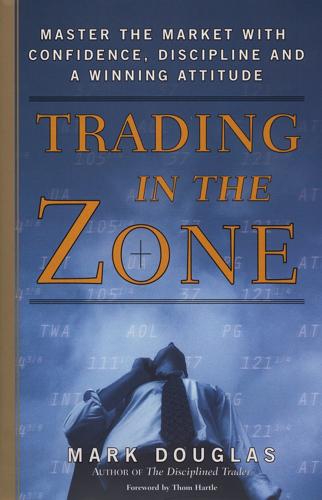
Trading in the Zone: Master the Market With Confidence, Discipline and a Winning Attitude
by
Mark J. Douglas
Published 1 Apr 2000
He is learning how to recognize and understand the market’s collective behavior patterns, and that’s good. It even feels good. He’s inspired because he assumes he’s learning about the market in order to become a winner. As a result, he will typically go on a knowledge quest, learning about trend lines, chart patterns, support and resistance, candlesticks, market profiles, point and line charts, Elliott waves, Fibonacci retracements, oscillators, relative strength, stochastics, and many more technical tools too numerous to mention. Curiously, even though his knowledge has increased, he now finds that he’s developed problems executing his trades. He hesitates, second-guesses himself, or doesn’t put on a trade at all, in spite of any number of clear signals to do so.

Flash Crash: A Trading Savant, a Global Manhunt, and the Most Mysterious Market Crash in History
by
Liam Vaughan
Published 11 May 2020
Ralph Nelson Elliott was a Kansas-born accountant who, in 1938, published a book called The Wave Principle that posited that markets move in discernible and therefore predictable wave formations based on the ebb and flow of crowd sentiment from optimism to pessimism. According to Elliott, while markets might appear to be random, they are in fact governed by recurring patterns grounded, like much in nature, on the Fibonacci sequence. Sarao was unconvinced: “I am well versed in Elliott waves—indeed I have the E-wave bible and have made some astounding predictions based on it. Yet I soon realised, after throwing away my rose-tinted glasses, that 70% of the time a chart can fit numerable e-wave patterns of [sic] no pattern at all. Which means one is up the proverbial creek if one is limited to that technique.”
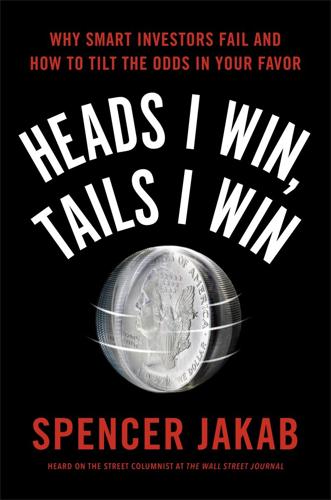
Heads I Win, Tails I Win
by
Spencer Jakab
Published 21 Jun 2016
Robert Prechter earned his claim to fame in the late 1970s, predicting a top for gold prices, which had been red-hot throughout the decade, almost to the exact month. More significantly, he also said a roaring equity bull market would begin in 1982, missing the date by only a few months. He claims to have made these predictions using an arcane technique called the Elliott Wave Theory developed by accountant and amateur social theorist Ralph Nelson Elliott in the 1920s. Subscribers to Prechter’s paid newsletter swelled to twenty thousand, with an annual subscription price of over $200, in the mid-1980s. Then he made a very optimistic and tantalizingly specific call on stocks, predicting that the Dow Jones Industrials would hit 3,686 in 1987 or 1988.
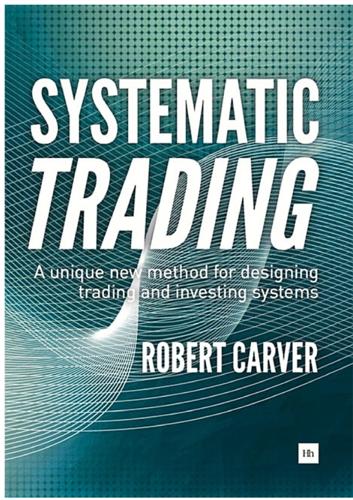
Systematic Trading: A Unique New Method for Designing Trading and Investing Systems
by
Robert Carver
Published 13 Sep 2015
Forecasts Instruments Trading rule A, A1 forecast for variation 1 instrument X Trading rule B, variation 1 Combined forecast Y targeting sizing Position weights Subsystem position in Y Instrument Trading rule A, A2 forecast for variation 2 instrument Y Volatility Trading rule A, A1 forecast, variation 1 instrument Y weights B1 forecast for instrument X Forecast Trading rule B, variation 1 Portfolio weighted position in X Subsystem position in X Combined forecast X Trading rule A, A2 forecast for variation 2 instrument X Portfolio weighted position in Y B1 forecast for instrument Y Customising for speed and size W HAT DO THESE TERMS ALL HAVE IN COMMON: BREAKOUTS, Elliott waves, Fibonacci waves, exponentially weighted moving average crossover and Bollinger bands? Answer: They can all form the basis of trading rules. These rules give you forecasts of what they think will happen to the prices of instruments you are trading or investing in. Staunch systems traders use multiple systematic rules like these.
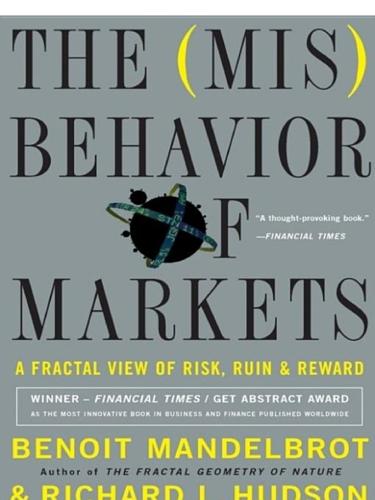
The Misbehavior of Markets: A Fractal View of Financial Turbulence
by
Benoit Mandelbrot
and
Richard L. Hudson
Published 7 Mar 2006
Consider chartists, who try to spot patterns in the market. The sophistication of these techniques varies greatly. Some are mere eyeball hunches: A pattern in an index or price chart looks like one that has happened before, and so you bet the chart will keep moving in the same way. Others are more elaborate. The best-known example is the Elliott Wave. Ralph Nelson Elliott was a Kansas-born accountant who spent much of his working life reorganizing railroads and state finances in Central America and who, during a debilitating illness, devised a new charting methodology. Investor psychology, he felt, moves in waves of optimism and pessimism; and these waves can be seen in the stock market again and again, at different times and at different time-scales.
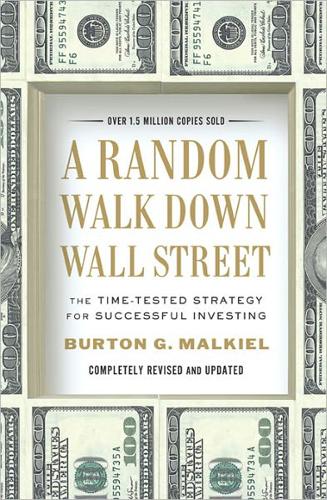
A Random Walk Down Wall Street: The Time-Tested Strategy for Successful Investing
by
Burton G. Malkiel
Published 10 Jan 2011
Prechter became interested in the parallels between social psychology and the stock market while a Yale undergraduate. After college, Prechter spent four years playing drums in a rock band, after which he joined Merrill Lynch as a junior technical analyst. There Prechter stumbled on the work of an obscure accountant, R. N. Elliott, who had devised an arcane theory which he modestly entitled the Elliott wave theory. Elliott’s premise was that there were predictable waves of investor psychology and that they steered the market with natural ebbs and flows. By watching them, Elliott believed, one could call major shifts in the market. Prechter was so excited about this discovery that he quit Merrill Lynch in 1979 to write an investor newsletter from the unlikely location of Gainesville, Georgia.
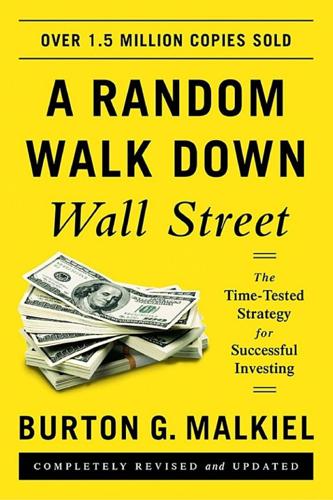
A Random Walk Down Wall Street: The Time-Tested Strategy for Successful Investing (Eleventh Edition)
by
Burton G. Malkiel
Published 5 Jan 2015
Prechter became interested in the parallels between social psychology and the stock market while a Yale undergraduate. After college, Prechter spent four years playing drums in a rock band, after which he joined Merrill Lynch as a junior technical analyst. There Prechter stumbled on the work of an obscure accountant, R. N. Elliott, who had devised an arcane theory that he modestly entitled the Elliott wave theory. Elliott’s premise was that there were predictable waves of investor psychology and that they steered the market with natural ebbs and flows. By watching them, Elliott believed, one could call major shifts in the market. Prechter was so excited about this discovery that he quit Merrill Lynch in 1979 to write an investor newsletter from the unlikely location of Gainesville, Georgia.

A First-Class Catastrophe: The Road to Black Monday, the Worst Day in Wall Street History
by
Diana B. Henriques
Published 18 Sep 2017
Securities and Exchange Commission Division of Market Regulation, March 1987, p. 9. Subsequent investigation showed that the S&P 500 futures: Ibid., p. 8. This wasn’t the whole story about Thursday’s historic decline: On September 2, 1986, analyst Robert Prechter, who published the influential Elliott Wave Theorist newsletter, had urged investors to take their profits in the stock market, but his followers probably would not have waited a full ten days to act on his advice. A four-day decline in the market can have its own discouraging effects, turning optimists into pessimists; no doubt, that was an additional factor in the decline.
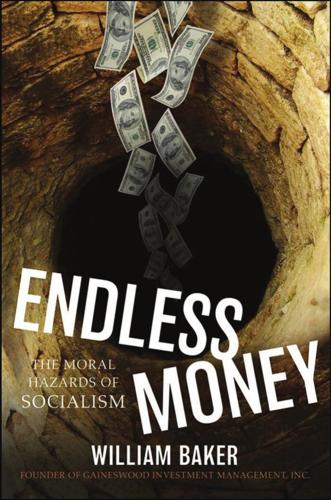
Endless Money: The Moral Hazards of Socialism
by
William Baker
and
Addison Wiggin
Published 2 Nov 2009
Paul Comly French, “$3,000,000 Bid for Fascist Army Bared,” Philadelphia Record, November 20, 1934. Jules Archer, The Plot to Seize the White House (New York: Hawthorn Books, 1973), 139. Ibid., 9. Franklin Roosevelt, Executive Order Number 6102, April 5, 1933. Robert R. Prechter, Conquer the Crash (Gainesville, GA: Elliott Wave International, 2002), 213. Historical Statistics of the United States: Colonial Times to 1957, Series X 285– 298 Currency in Circulation, by Kind: 1860–1957 (U.S. Department of Commerce, 1960), 648. Specie in 1925 was $718 million compared to M2 of $42 billion. Historical Statistics of the United States: Colonial Times to 1970, Series X 410– 419 Money Stock-Currency Deposits, Bank vault Cash, and Gold: 1867– 1970 (U.S.